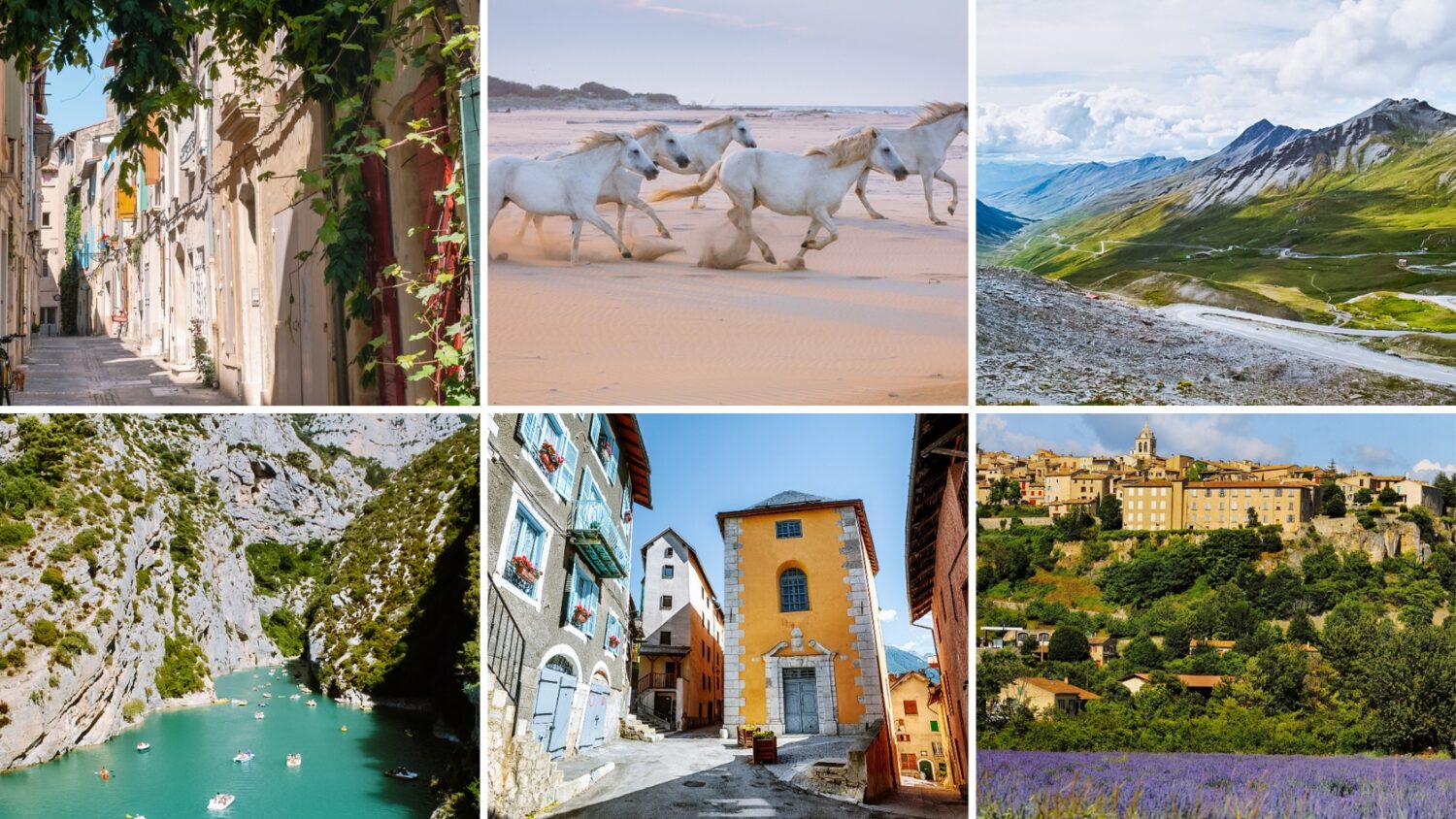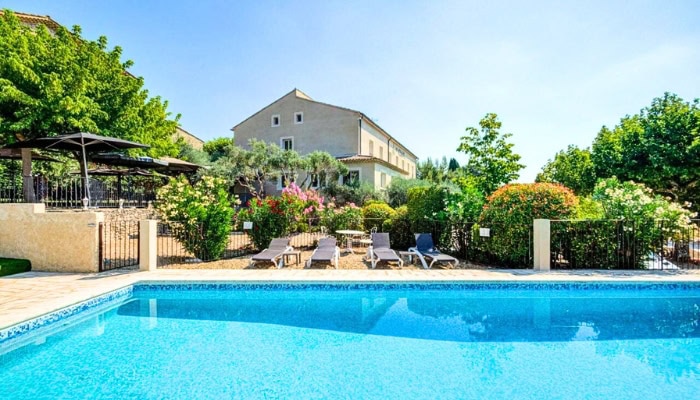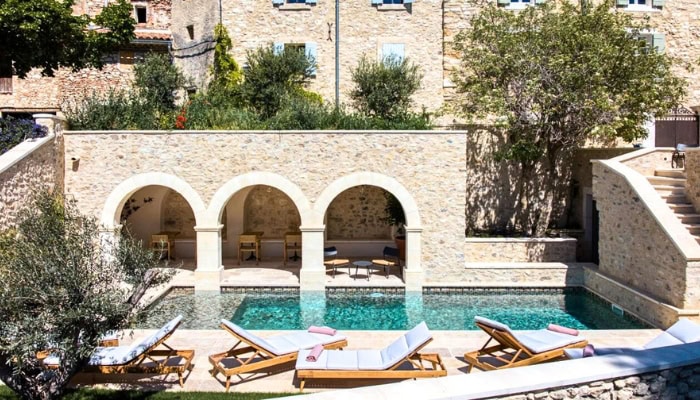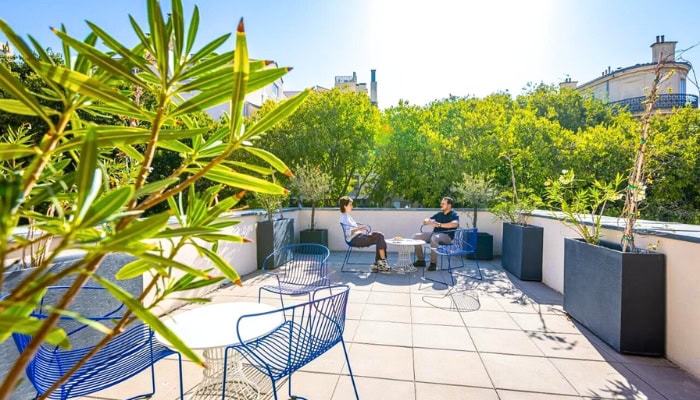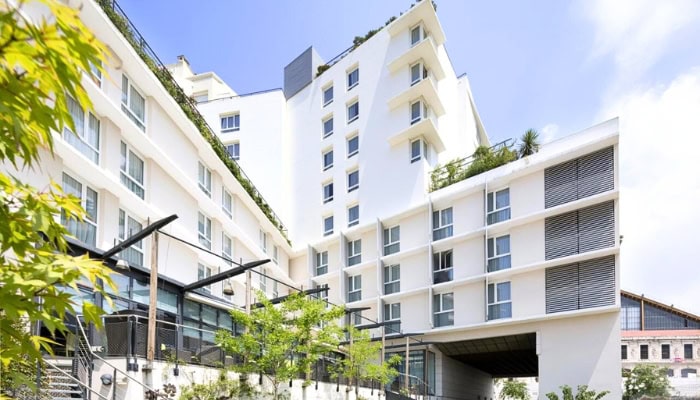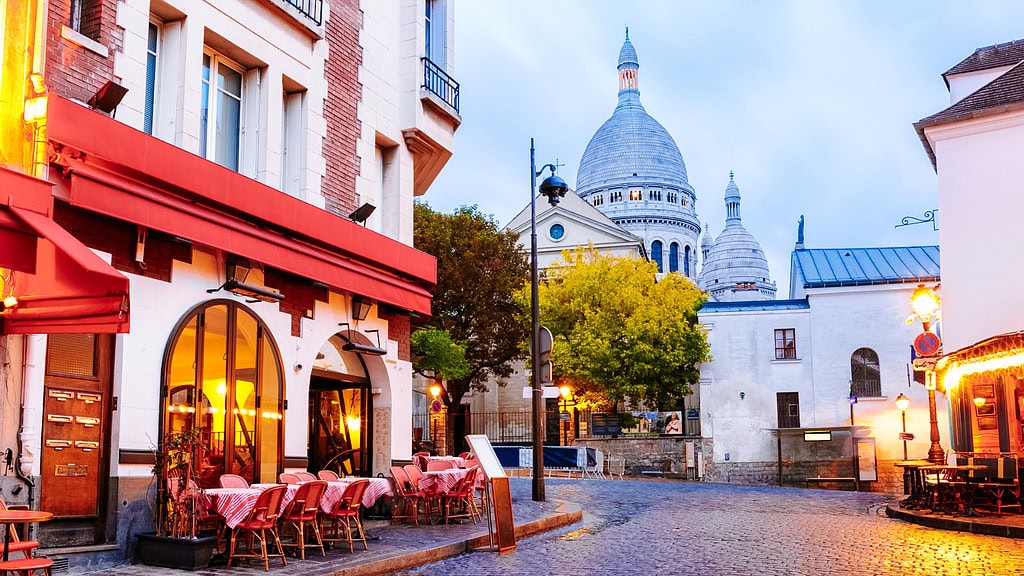Looking for top places to visit in Provence, France? Check out our Provence guide with tips on the best things to do in Provence + map.
It also includes practical information and tips on restaurants, where to stay and a map to help you plan your itinerary for your holiday in Provence.
25 Best Things to do in Provence, France: Top places to visit
Ever since we sang “Sur le pont d’Avignon, L’on y danse, l’on y danse, sur le pont d’Avignon…” in French class, Provence in France has been etched in my memory. If you’ve fallen in love with the Provence region as much as I have, check out the most beautiful places to go in Provence and go on an adventure.
- 25 Best Things to do in Provence, France: Top places to visit
- What does Provence mean?
- Where is Provence?
- Interesting facts about Provence
- Things to do in Provence, France – map
- Things to do in Provence, France: Best places to visit
- 1. Mercantour National Park
- 2. Luberon region
- 3. Gordes
- 4. Roussillon
- 5. Forcalquier
- 6. Avignon
- 7. Arles
- 8. Pont du Gard
- 9. Lavender and sunflower fields
- 10. Sault
- 11. Mont Ventoux
- 12. Camarque Nature Park
- 13. Saintes-Maries-de-la-Mer
- 14. Calanques National Park
- 15. Marseille
- 16. Aix-en-Provence
- 17. Gorges du Verdon
- 18. Fontaine-de-Vaucluse
- 19. Les Baux-de-Provence
- 20. Quarry Grands Fonds
- 21. Saint-Rémy-de-Provence
- 22. Briancon
- 23. Queyras Nature Park
- 24. Ecrins National Park
- 25. Hyères Islands (Îles d'Hyères) – Golden Isles
- Where to stay in Provence?
- Provence itinerary
- How to get to Provence, France
- Food in Provence
- When to visit Provence?
- More information about France
What does Provence mean?
Have you ever wondered what Provence actually means? I was surprised myself how simple the explanation of the title is. Provence comes from the Latin word for “province”. Part of the area was formerly one of the oldest Roman provinces outside the Roman Empire itself and was called “Provincia Nostra” (translated as “Our Province”).
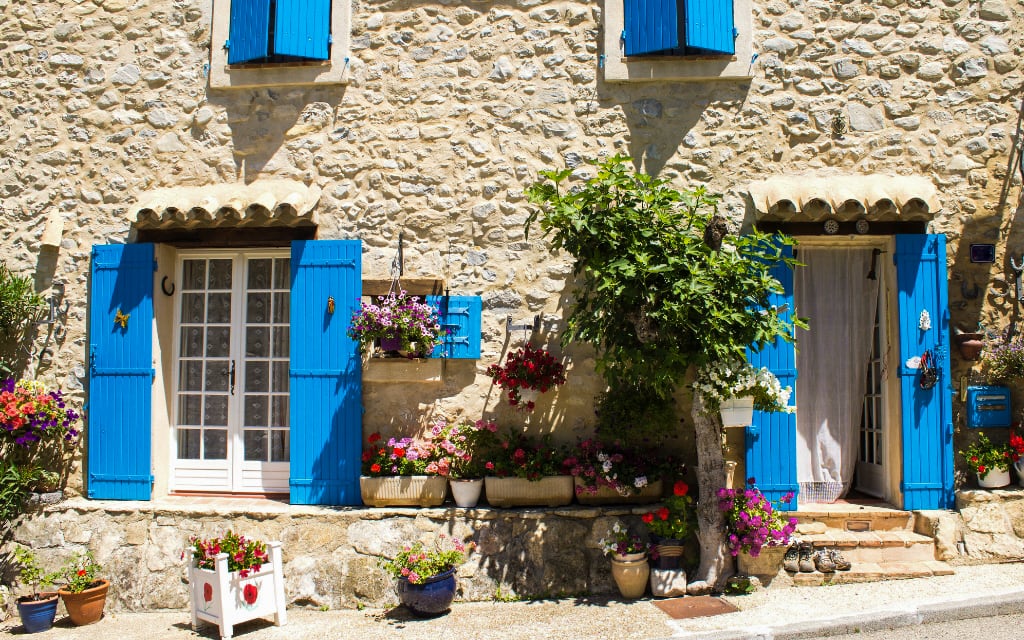
Where is Provence?
Provence is a region in south-eastern France between the Provençal Alps and the French Riviera. It is surrounded by dramatic peaks to the north and the Mediterranean Sea to the south. It is a historic country united by the local language, Provençal, and a shared history.
Interesting facts about Provence
Unspoilt medieval villages set in Alpine peaks, olive groves and lavender fields. The real Provence.
Pink flamingos, semi-wild horses, Roman and Greek ruins and tulip fields like in Holland. No longer the usual image of Provence. And yet he is inherently linked to this area. Today we will show you what are the top places to visit in Provence, France.
Provence is a region full of history. The Greeks already founded their settlements here and later it was under the rule of the Roman Empire from the 2nd century BC until the 5th century AD. It later disintegrated, but its traces have been preserved in several places until today. Many of the cities on the south coast date back to antiquity – Marseille, Avignon, Nice, Saint Tropez, Cannes and Monte Carlo.
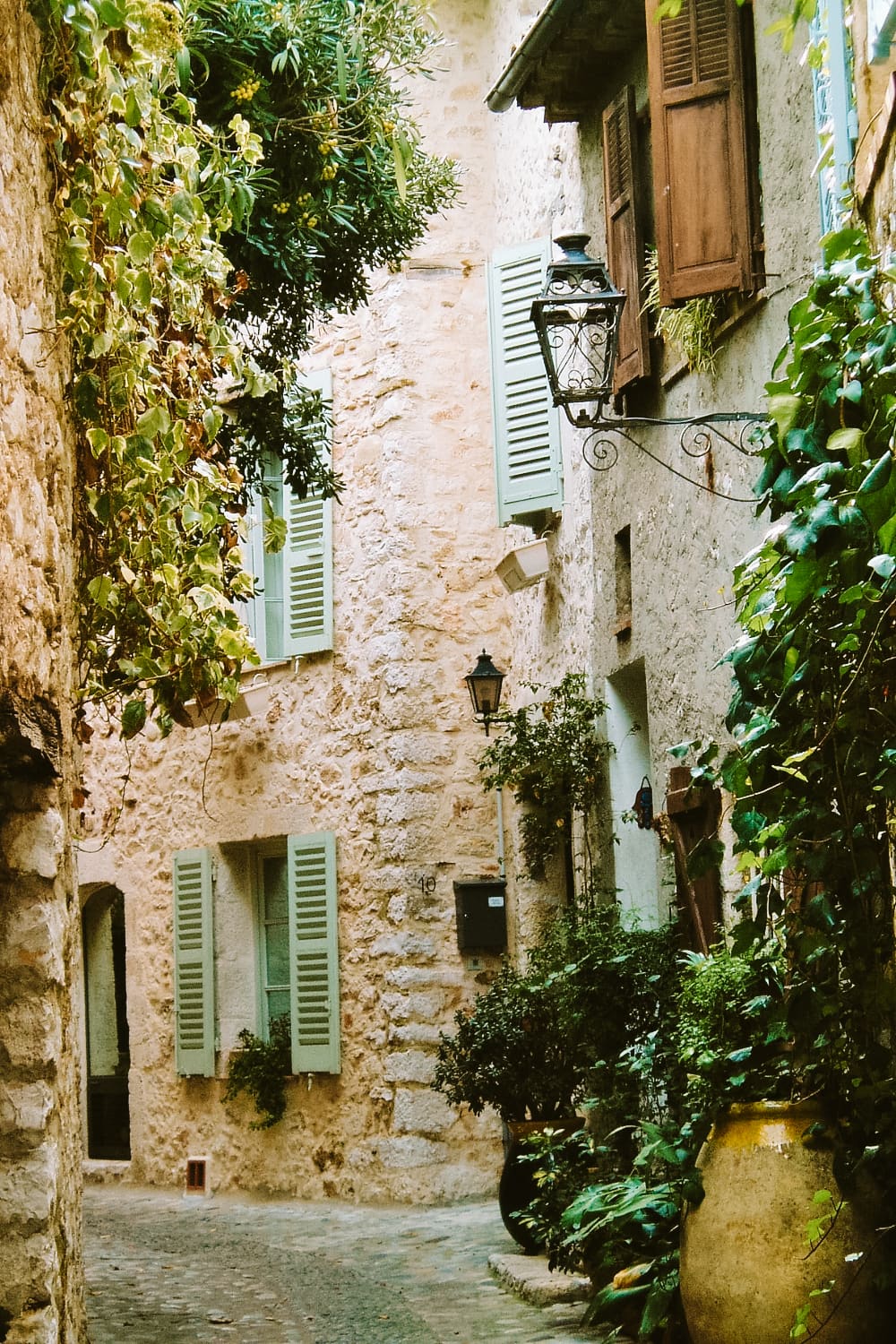
Provence has more sun than any other part of France (like the Dolomites in the Alps). It’s warm here from March to October. Provence has even more sunny days than Los Angeles or Miami, which are generally considered to have sunny and warm climates. The sun shines “only” 2,000 hours a year in Los Angeles and Miami, and a whopping 2,900 hours a year in Provence.
Why visit Provence?
In Provence is the city of Grasse, which is considered the capital of perfume. It produces three quarters of the world’s fragrances and is associated with names such as Chanel and Dior. Many “noses” here train to learn to distinguish more than 2,000 different scents. For its perfume know-how, the city of Grasse was inscribed on the UNESCO Intangible Cultural Heritage List in 2018.
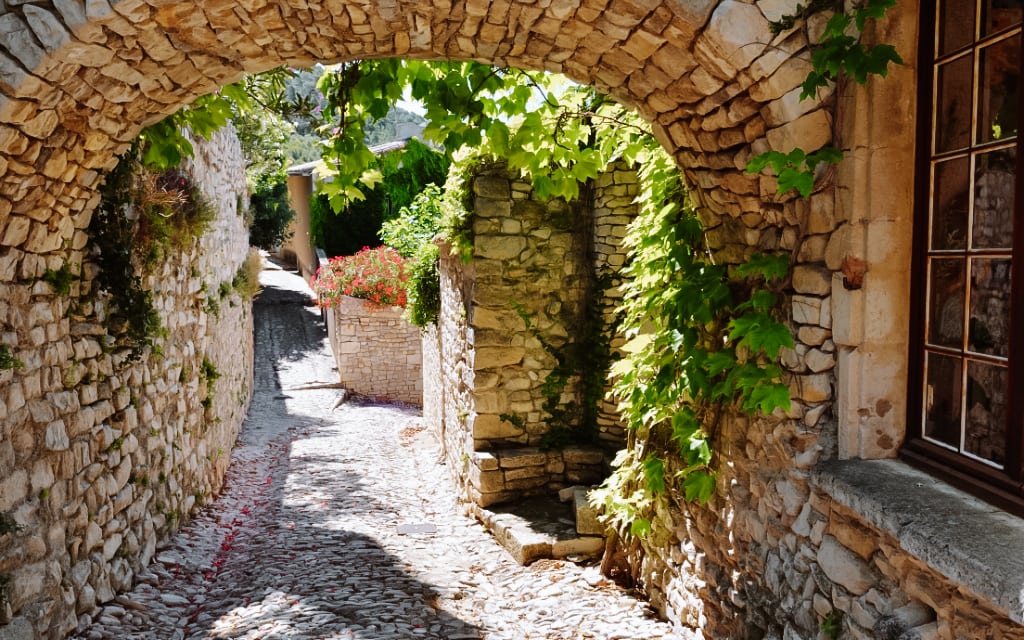
The landscape, the amazing colours and the light have attracted artists who have worked here for centuries. One of the most famous was the Dutch painter Vincent Van Gogh, who painted several of his paintings here(Terrace of the Café at Night and Starry Nights over the Rhône). In 1889, he was admitted to the mental hospital at St-Paul-de-Mausole Convent, where he painted his works The Iris and Starry Night. The largest collection of Van Gogh paintings, including portraits, can be seen at the Van Gogh Museum in Amsterdam.
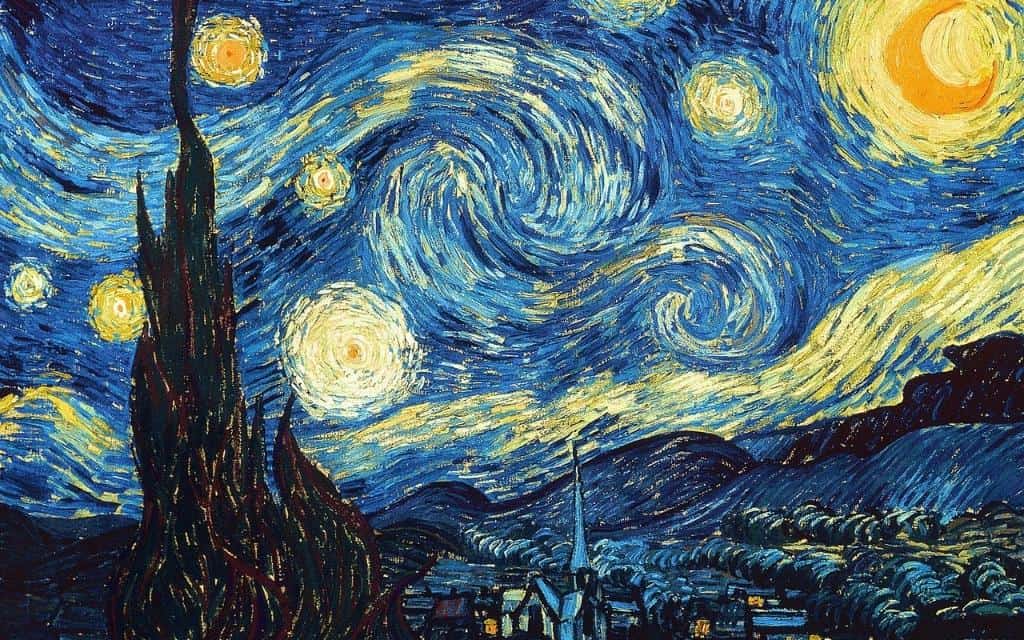
Another famous artist was Paul Cézanne, who was born in Aix-en-Provence. He painted the local mountain Sainte-Victorie 87 times. Cézanne was a great inspiration for Picasso, who later bought a 17th-century castle on the hillside of Sainte-Victorie and lived there for 8 years.
Provence is the oldest wine-growing region in France. As early as 600 BC, the Greeks brought and cultivated wine here. The Romans and, after the fall of the Roman Empire, the Christian monks also continued winemaking. Among the most famous wines are Chateauneuf-du-Pape, Beaumes de Venise and Camarque rosé, which grows in the sand.
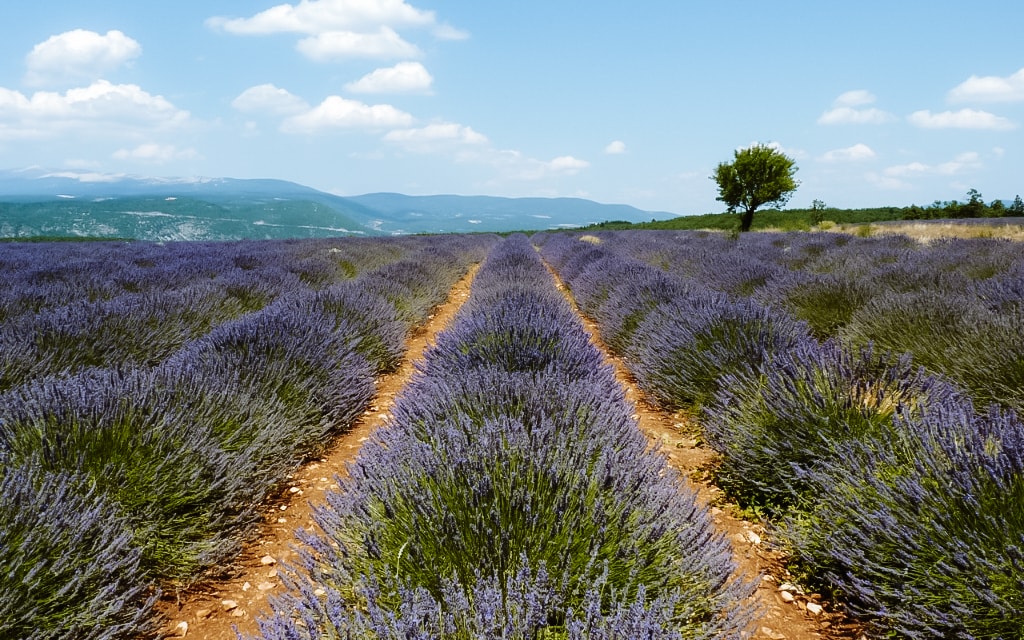
Who doesn’t know lavender fields? The peak season for lavender is mid-July. Some places even allow you to harvest your own lavender and make essential oil from it. In today’s guide, we’ll show you where the lavender fields of Provence are located.
Things to do in Provence, France – map
HOW TO USE THIS MAP: Above you will find a detailed map of things to do in Provence. Click at the top left of the map to see separate layers with highlighted locations. You can hide and show the different layers or click on the icons on the map to see the names of the places I mention in the Provence guide. If you want to save the map, star it. For a larger version, click on the icon in the upper right corner.
Things to do in Provence, France: Best places to visit
There are so many wonderful places to visit in Provence. This list is just a small taste of what you can see in Provence.
1. Mercantour National Park
The Mercantour National Park is an area full of lakes and mountains, covering an area of 685 km2. It represents a transition zone between the Alps and the Mediterranean. As a result, different climates alternate here.
The central area is uninhabited and partly accessible by hiking trails. At the edges of the Mercantour Park you will find villages, some of which are set into rocky hillsides (e.g. Coaraze).
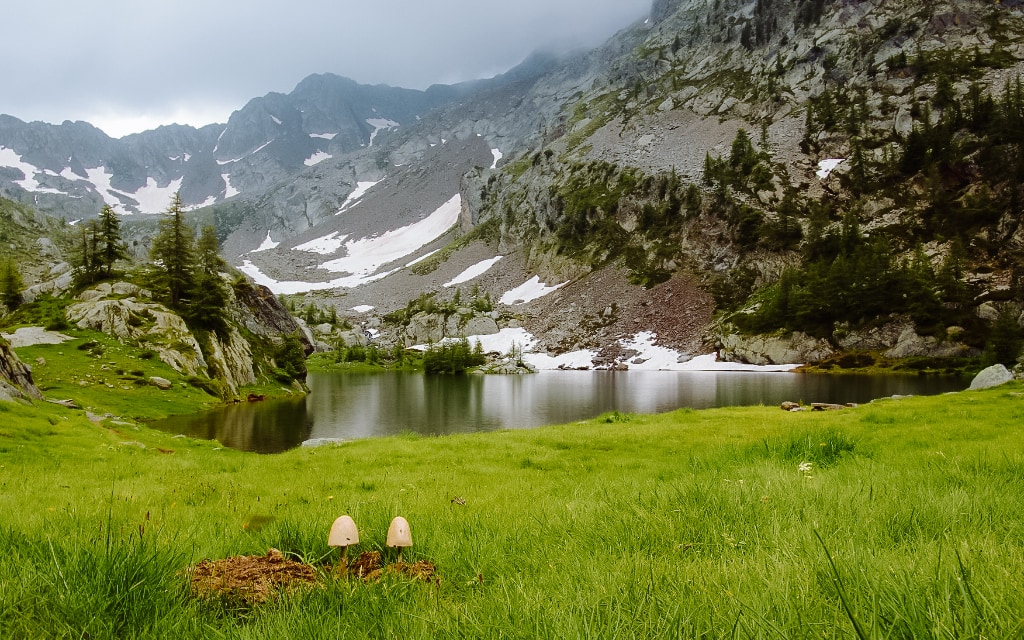
When visiting the park, don’t miss the Vallée des Merveilles, where you’ll see hundreds of 3,000-year-old rock carvings of people and animals. The ten-kilometre route leads from Les Mesces Refuge.
2. Luberon region
The Luberon region is one of the most beautiful places in Provence. It is famous for its rocky, limestone hills, olive groves and wooded valleys. Not to mention the local medieval villages, which are among the most beautiful villages in France.
The villages of Gordes, Roussilon with its ochre quarries, Oppéde le Vieux, Ménerbes, Lacoste with its chateau that was formerly the home of the Marquis de Sade and many other villages that often stand out from the tourist crowds.
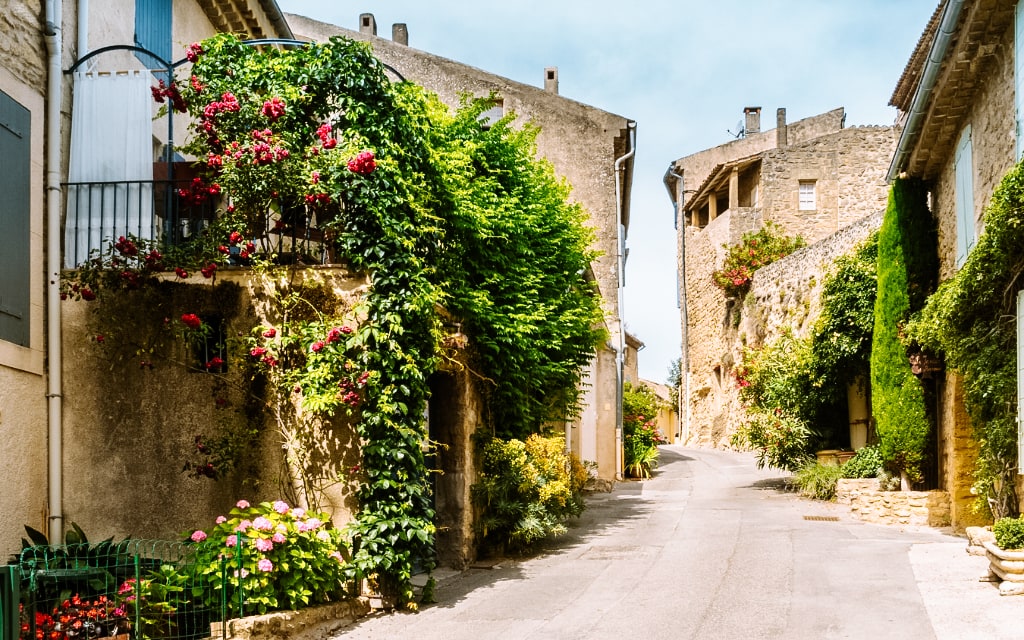
Even as you drive, you see villages in the hills. And some of them are really small and you can walk through them in less than half an hour, but still they are absolutely picturesque. It won’t take you long to visit each place, so you can combine several of them into one itinerary.
3. Gordes
Gordes is a picturesque hilltop village in the Luberon region, made up of winding streets and stone houses. The Château de Gordes is one of the oldest castles in France. From the village, you will have a wonderful view of the surrounding area – especially from Town View Point Gordes (see photo above).
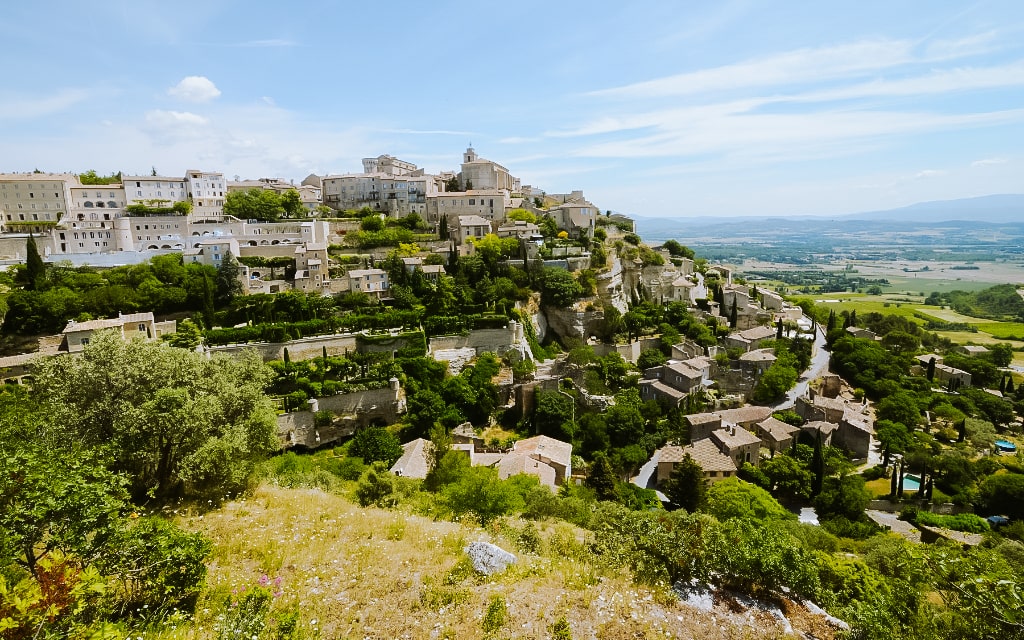
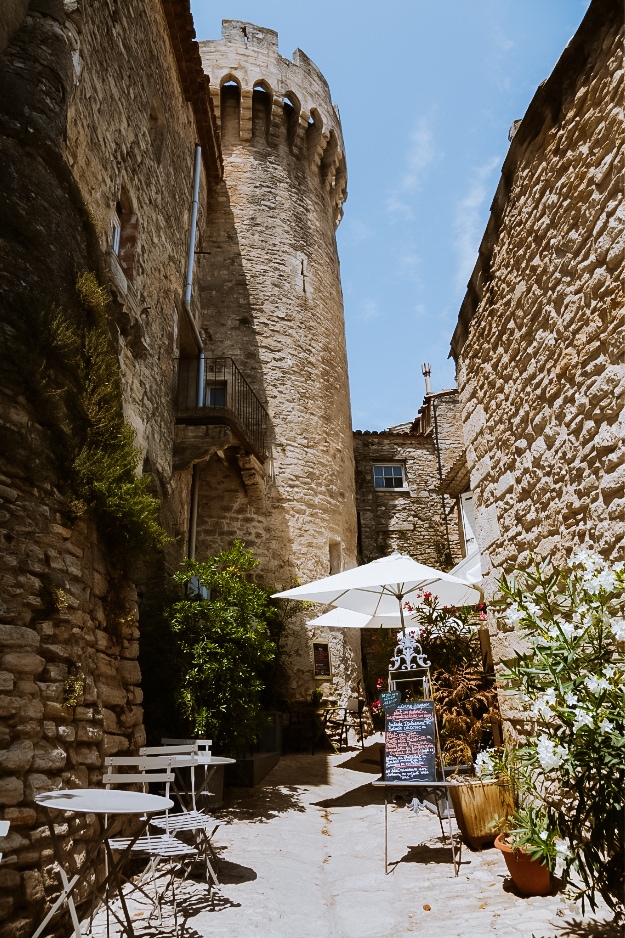
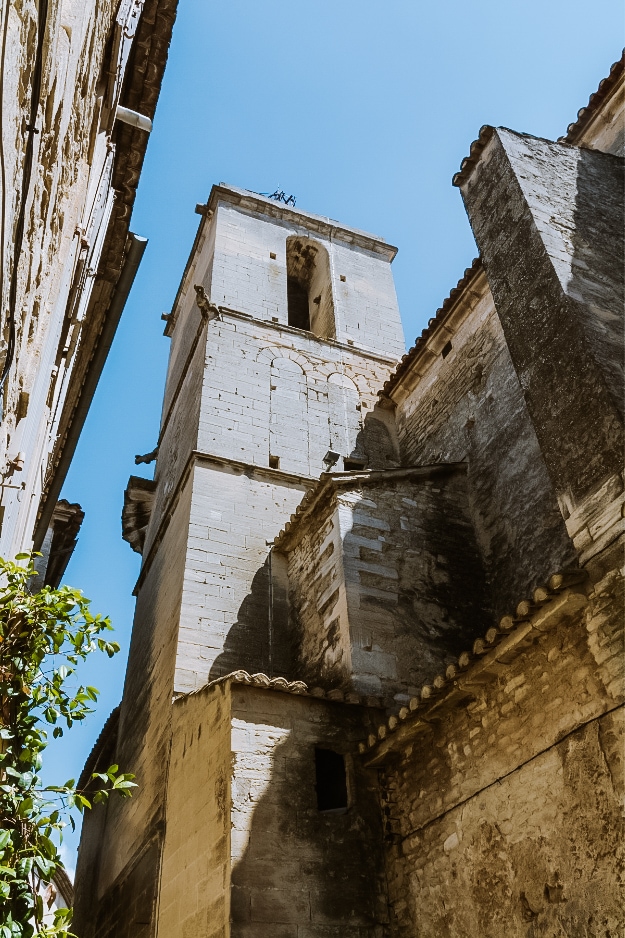
If you’re closing into Gordes on a Tuesday, check out the local market for local specialities. Such markets are typical of Provence. Almost every village has them and they take place at least once a week.
North-west of Gordes is the Village des Bories, an open-air museum of dry-stone houses that were formerly used as agricultural shelters to hide livestock and equipment.
4. Roussillon
Not far from Gordes is the village of Roussillon, where you can stroll among picturesque houses in orange, red and pink hues. In the centre there is a sundial, a bell tower from the 19th century and several galleries.
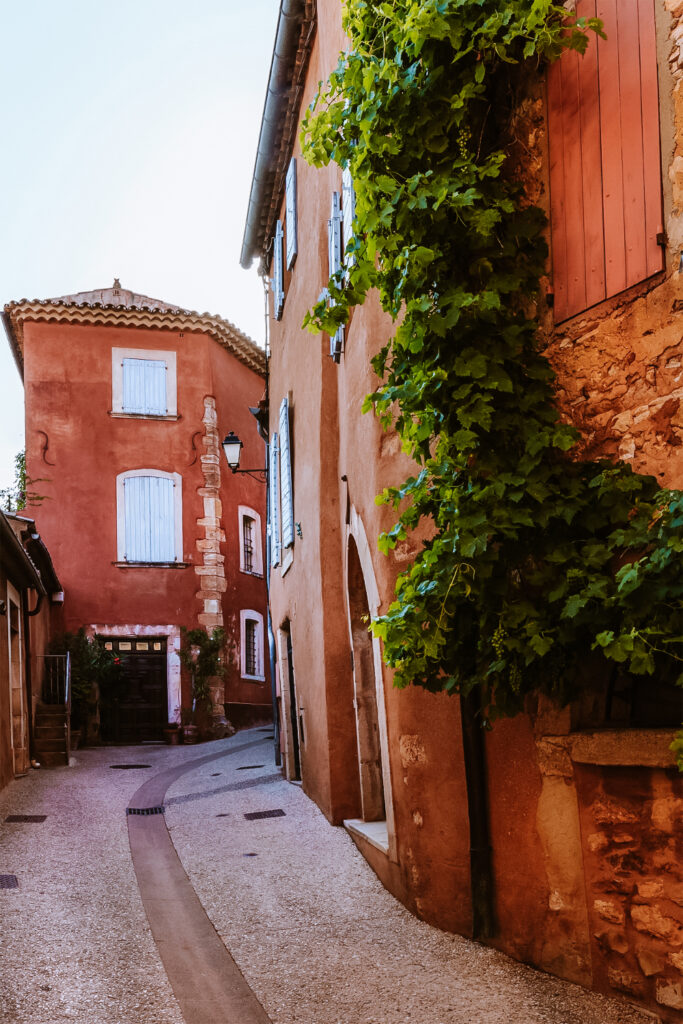
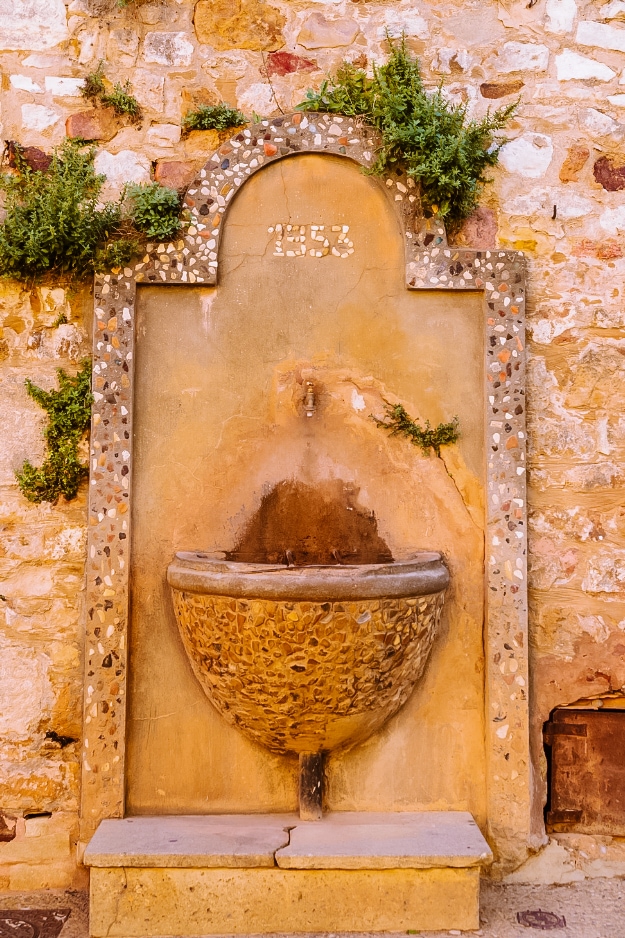
There are ochre quarries hidden in the woods on the edge of Roussillon, which you can walk along a path with wooden walkways. The circuit around the quarries will take you about 40 minutes. There are paid parking and toilets a short distance from the quarries. It’s quite a touristy place, but definitely worth seeing on the way around.
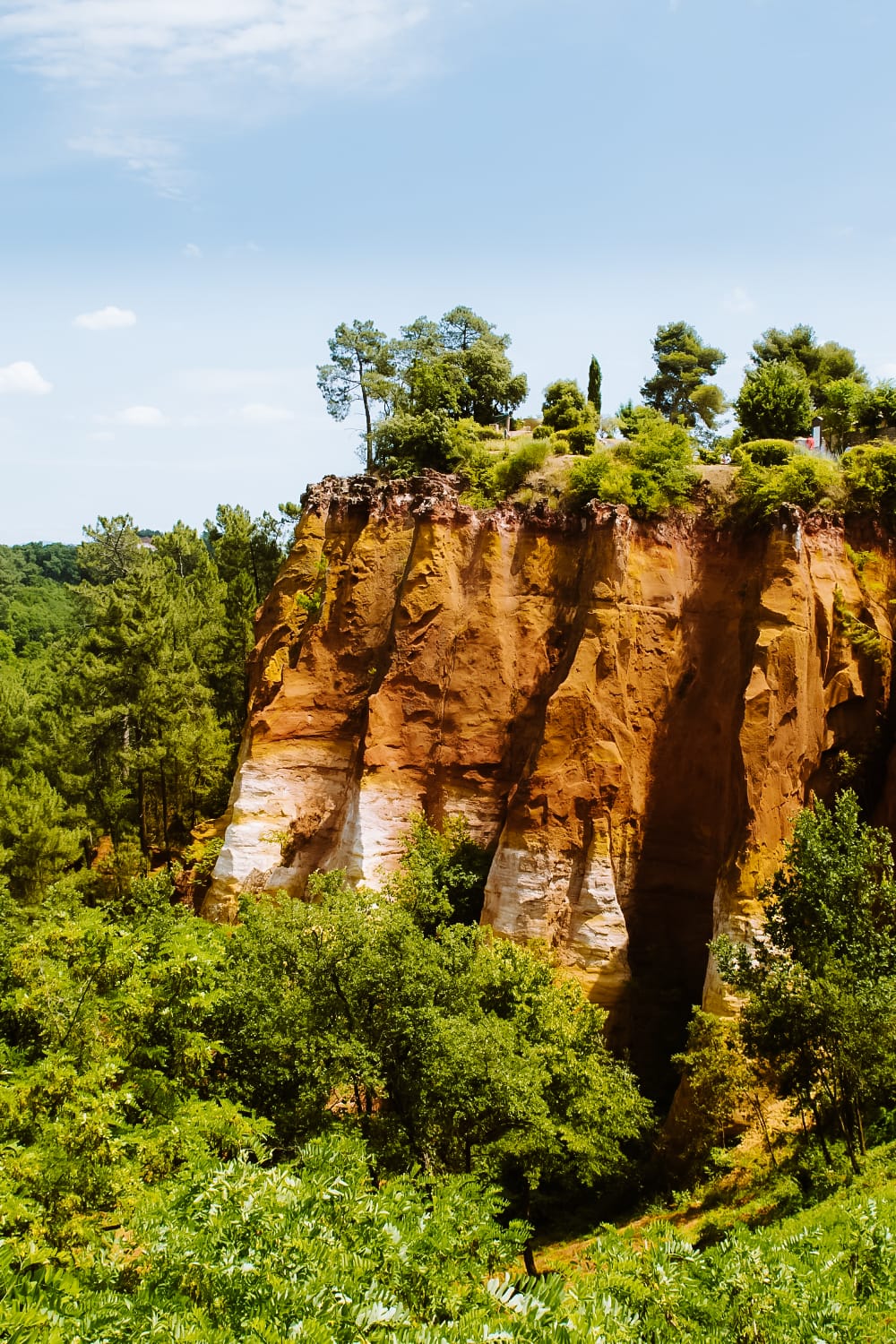
Guests can dine at La Grappe de Raisin with a terrace and views of Roussillon. Or at Restaurant David at the ochre cliffs. If you make a reservation for the evening, you’ll have a view of the cliffs as they change the bar as the sun sets.
Hotels in Provence 😴
5. Forcalquier
Did you know that in France you can find tulip fields like a cut-out from a catalogue about Holland? In April and May, the meadows between La Brillanne and Forcalquier are bursting with colour. A short distance from Forcalquier is the Massif Des Moures geological area with a number of rock formations, partly accessible by trail.
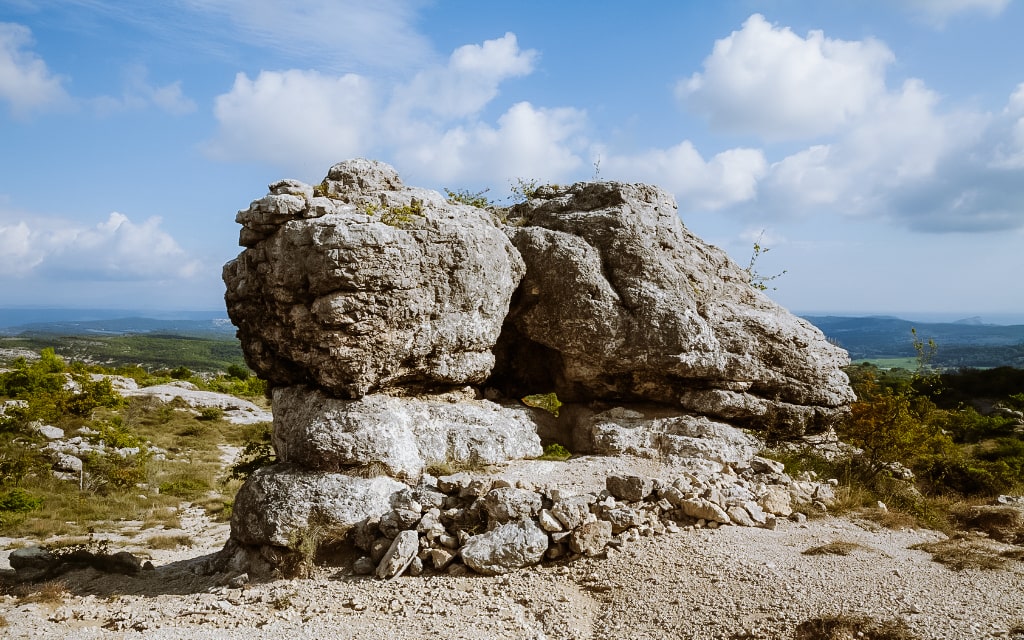
The town of Forcalquier itself is also worth seeing. A little above it is a chapel from where you can enjoy a beautiful view of the surroundings. The town centre is just a 10-minute walk away.
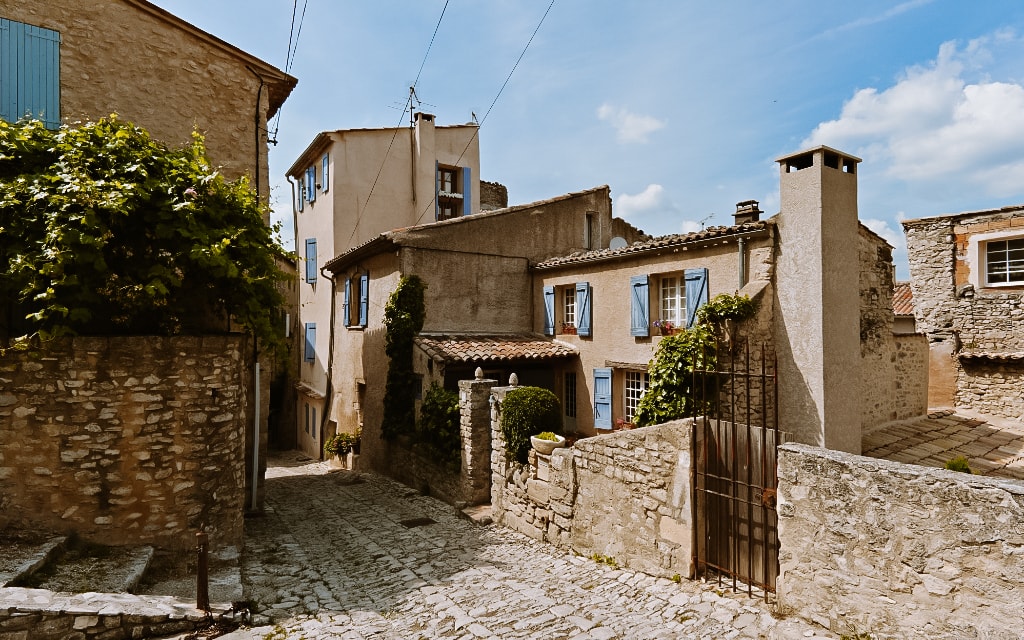
6. Avignon
Avignon is a historic medieval town on the Rhone River, surrounded by the original fortified city walls. Avignon, like several other towns in the region (such as Arles), is one of the historic “Secteur sauvegardé” towns. These are subject to strict rules for any reconstruction or renovation. The aim is to preserve the historic character of these towns.
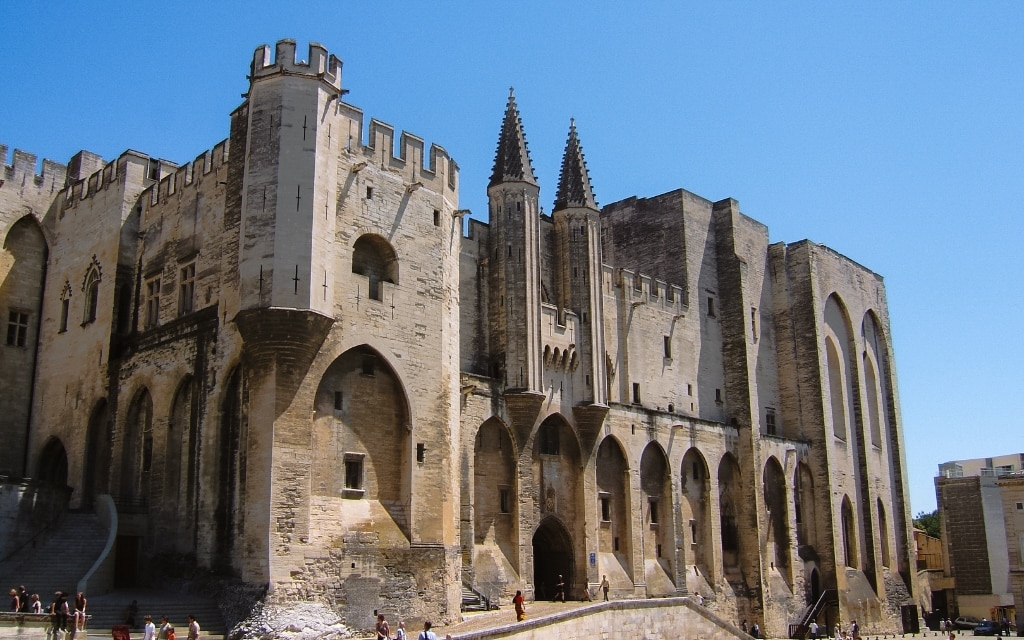
In Avignon, I recommend taking the route from the Palais des Papes and the Places de l’Horloge in the north, across the famous Avignon Bridge (Pont d’Avignon) and the historic centre in the streets around the palace and then the Rue de la Republique. You will get the best of Avignon.
Avignon is one of the most popular towns in Provence. Book Tickets to the Palais des Papes and the Avignon Bridge at a discounted price and skip the line.
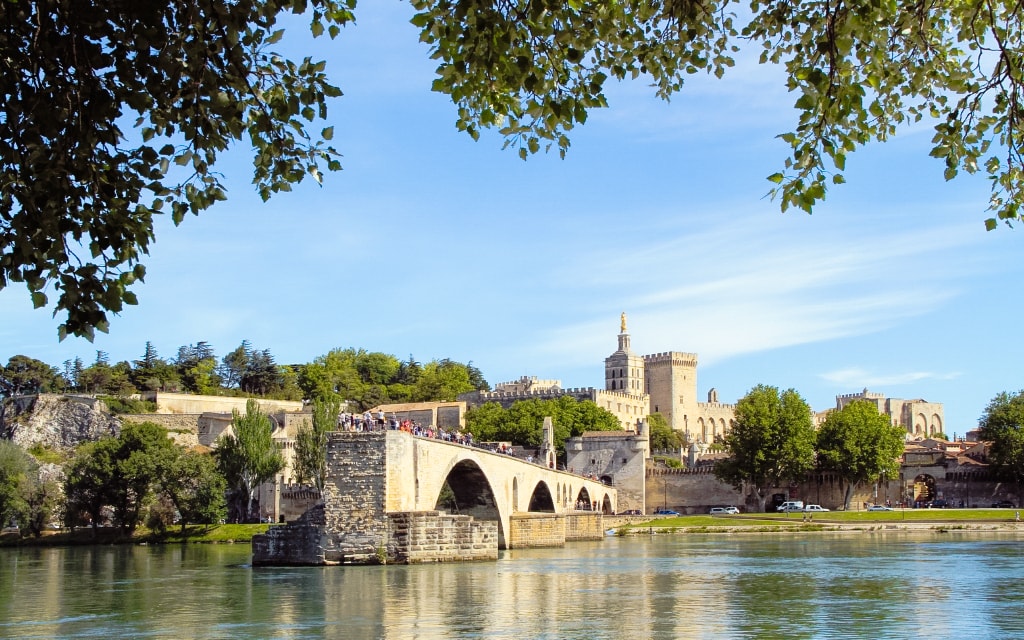
French cuisine can be enjoyed at La Fourchette. For good prices you can get excellent food here. Plus, it’s a short walk from the Palais des Papes. Got a hankering for a burger and home fries? Try Chez Bodus Le Garçon Boucher. A simple and cheap snack, but you’ll get a good deal.
7. Arles
Arles is a historic town in south-west Provence, famous for its Roman ruins. Moreover, it was the home of Van Gogh.
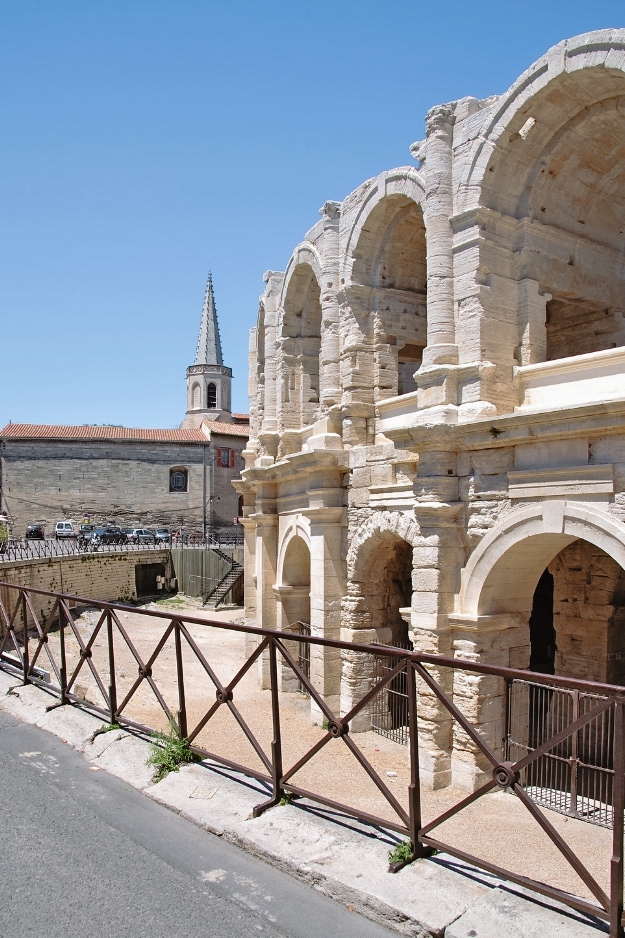
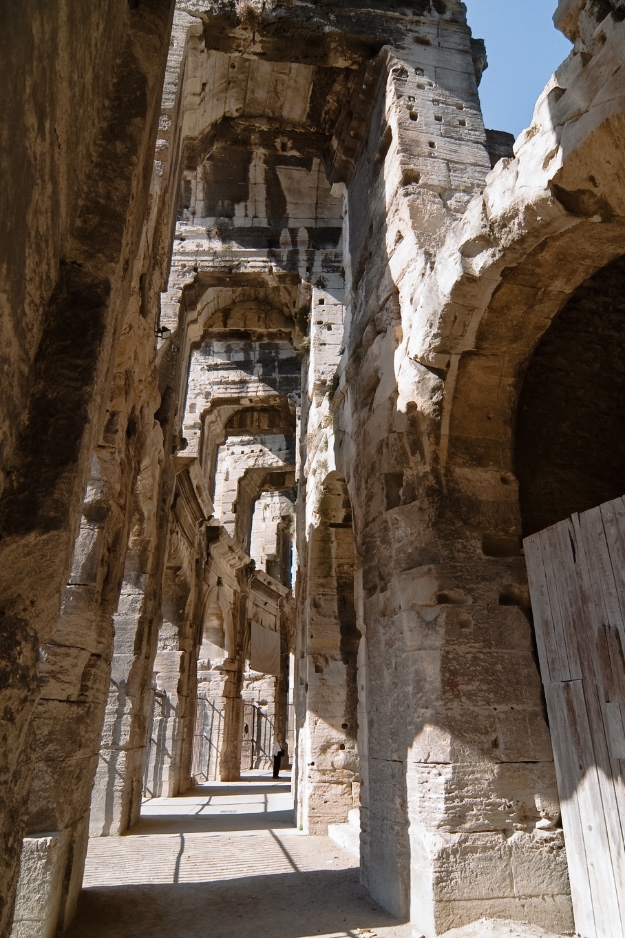
Visit the remains of Roman times in the form of a coliseum, Roman theatre, burial grounds and baths. From here, continue to the medieval part of Arles to the Place de la Republique with its church and Saint Trophime Basilica. Everything is intertwined and easily accessible.
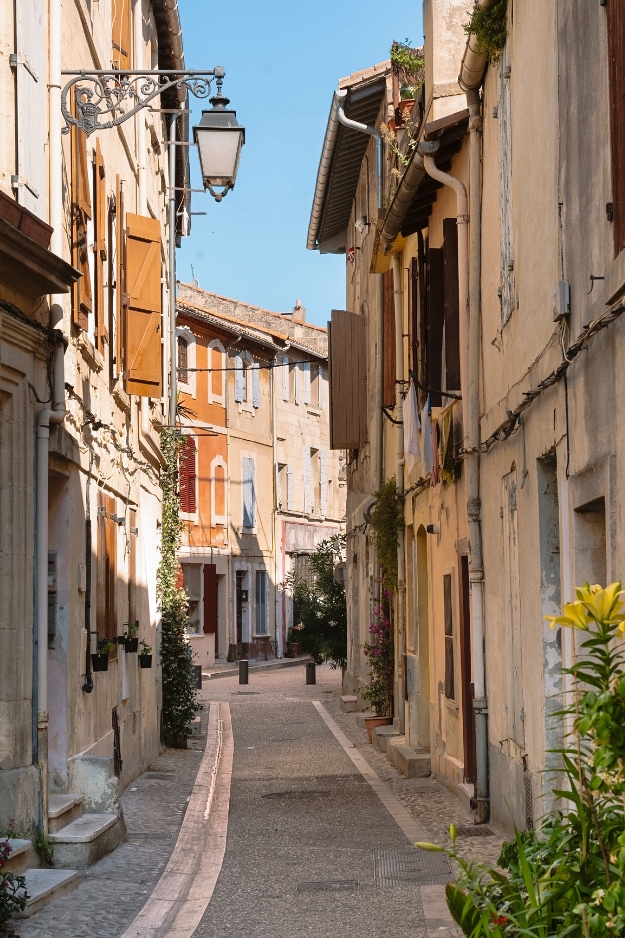
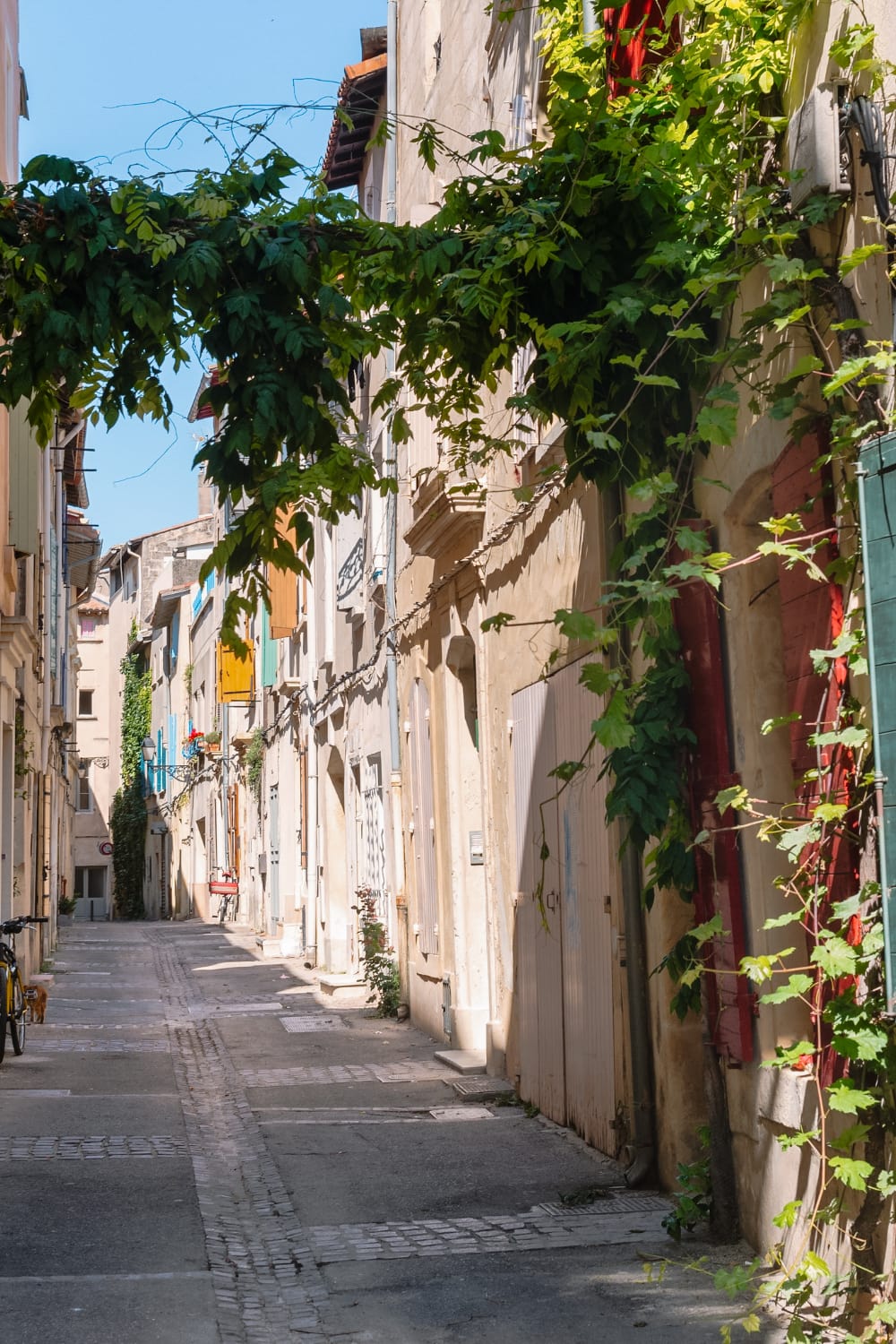
8. Pont du Gard
Pont du Gard is a 49-metre high aqueduct just 30 minutes from Avignon. It is the highest bridge built by the Romans and one of the best preserved Roman structures. That is one of the reasons why it is on the UNESCO list. It also boasts the title of the most visited ancient monument in France.
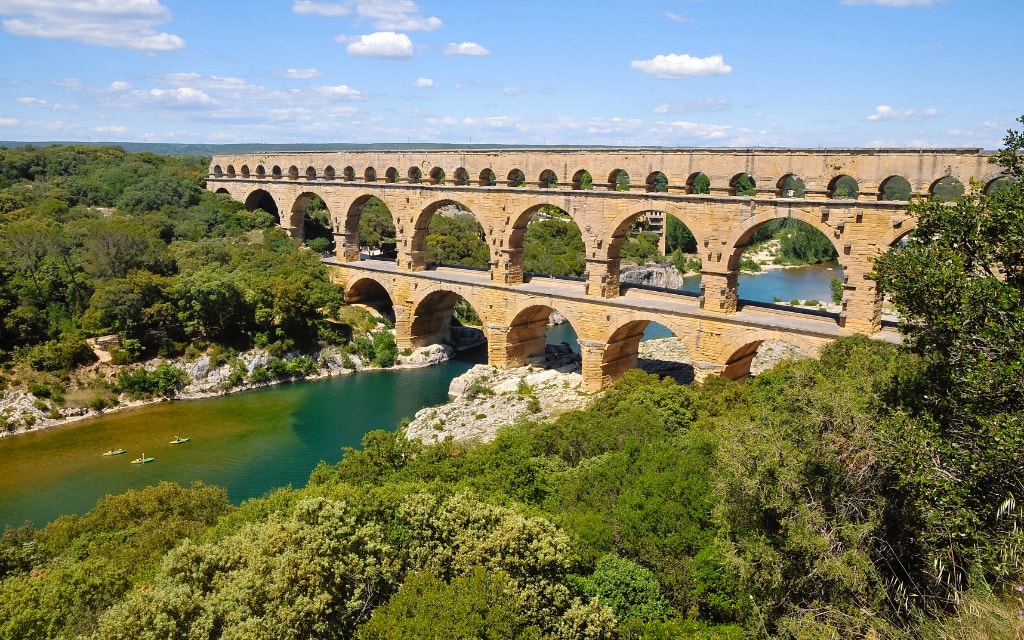
I recommend packing a picnic and coming here for the evening. There are also a number of viewpoints in the area where you will have a great view of the bridge.
9. Lavender and sunflower fields
When you say “Provence”, most of us think of lavender fields. If you want to explore some of the fields, head here in June and July. In mid-July, the lavender harvest is underway, but even in early August you will find unharvested fields.
Lavender fields in Provence
Famous lavender fields are the Plateau de Valensole, where lavender is mixed with sunflower fields. If you arrive in the evening, the fields will be beautifully lit by the setting sun.
Perhaps the most famous lavender fields are at the Abbey de Senanque, 40 minutes east of Avignon. But beware – even if it doesn’t look like it, crowds of people head here in high season. I suggest you get some sleep or ride off into the sunset.
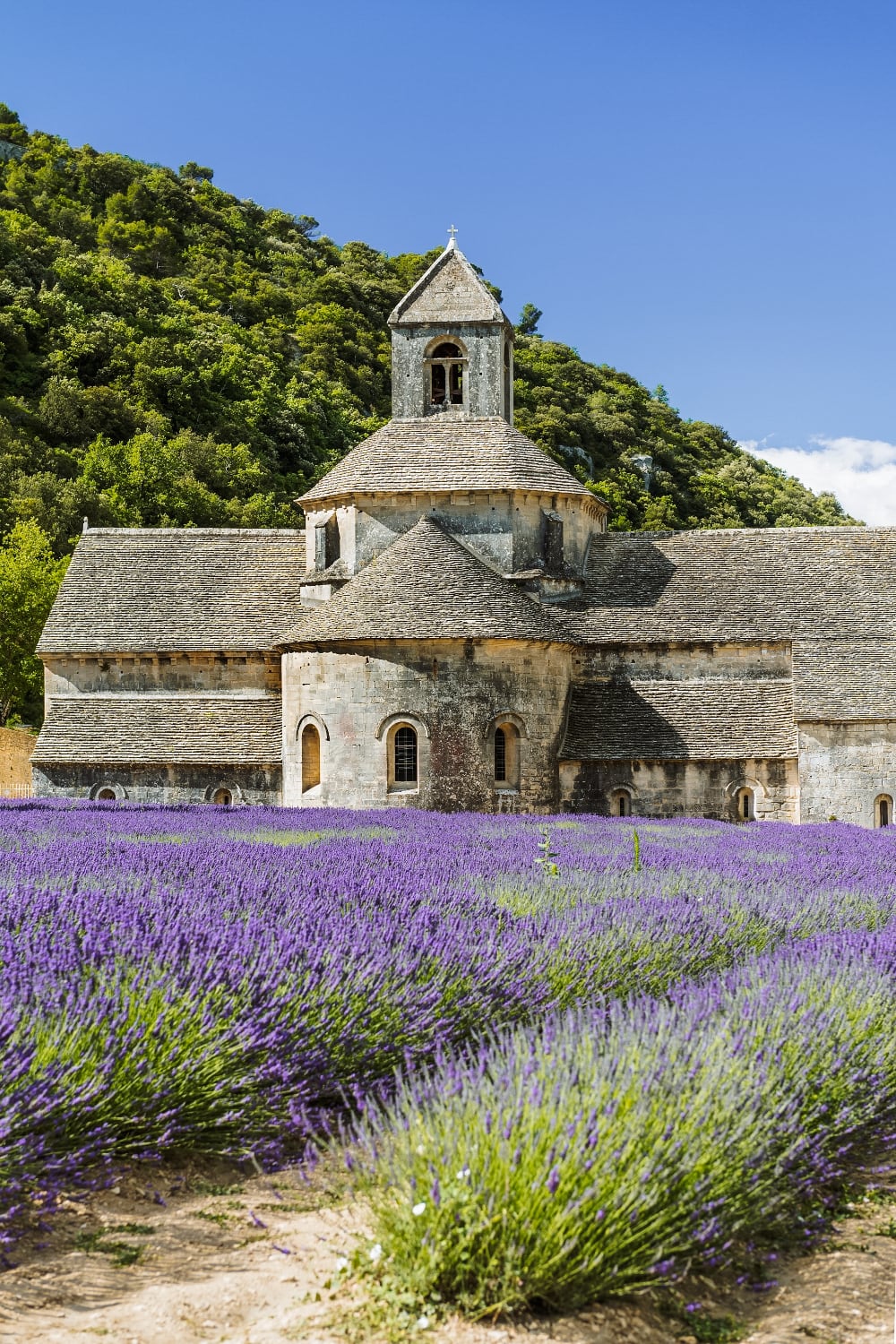
The fields in the Luberon region are also beautiful. Especially the area between Bonnieux, Lacoste and Gordes or the villages of Rustrel and Château du Bois. The last tip is the fields around the village of Sault, where a 5 km long road leads around some of the fields and the backdrop is the Mont Ventoux mountain.
Tip: If you head out into the sunflower fields, be vigilant. Insects, bees and reptiles abound.
10. Sault
Sault is a village surrounded by lavender. Getting here can be a bit challenging at times, as the streets are narrow and the curves are hairpin turns (sometimes it’s better to lower your mirrors). Nevertheless, the road is one of the most beautiful in Provence.
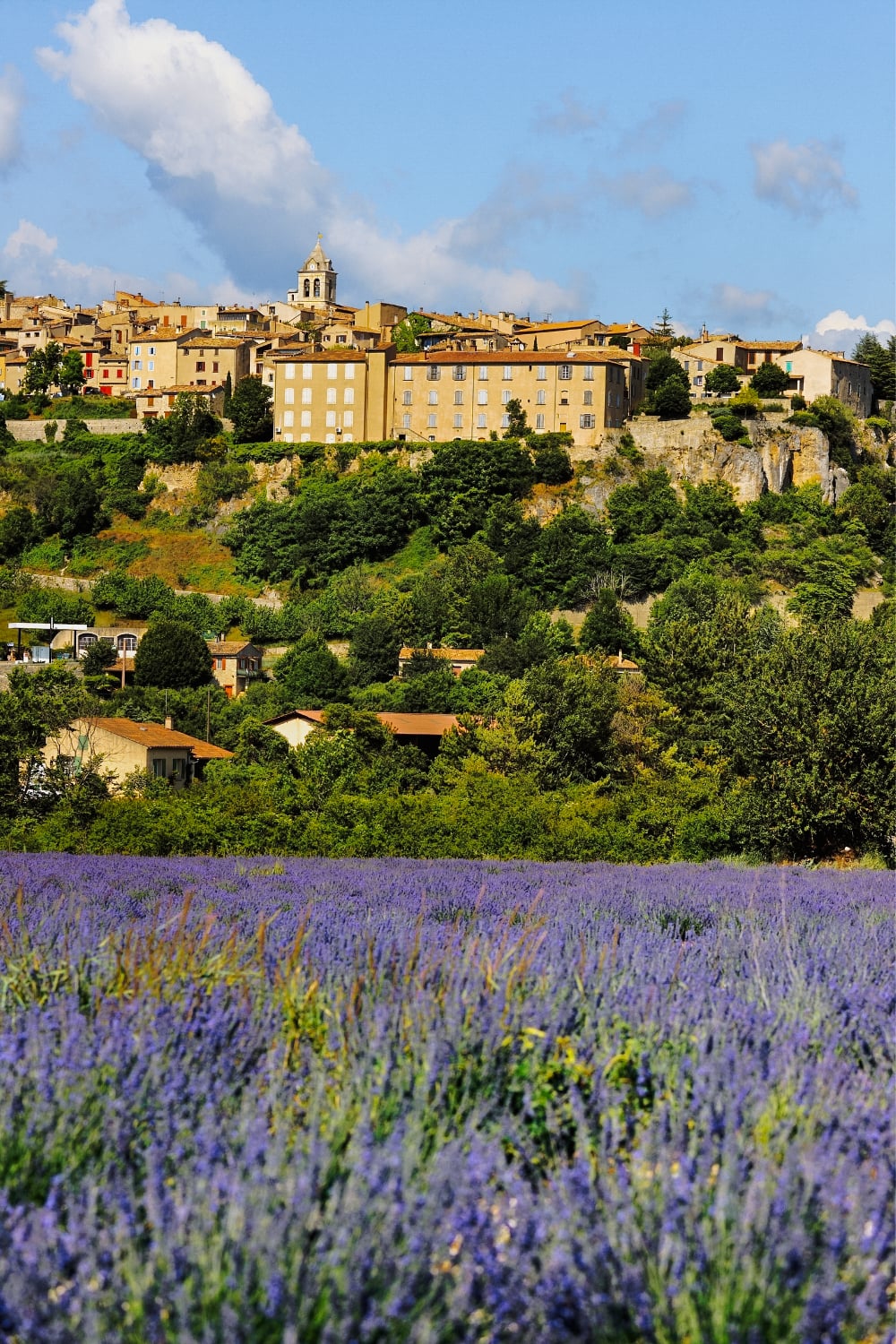
My tip is to rent a bike in front of the Intermarché Contact supermarket and ride around Sault on the bike paths between the lavender fields. Alternatively, have lunch at Le Petit Jardin restaurant, which serves everything from vegetarian dishes to local specialities.
11. Mont Ventoux
Mont Ventoux is an iconic peak in the Provençal Alps. With its altitude of 1909 m it is the highest peak in the area. At its top you will find a weather station and a chapel from the 15th century.
If you’ve seen the Tour de France, you may have already noticed it. That is why it is so popular among cyclists who try to conquer it. If you don’t feel like pedalling, you can drive up the panoramic road full of curves and views.
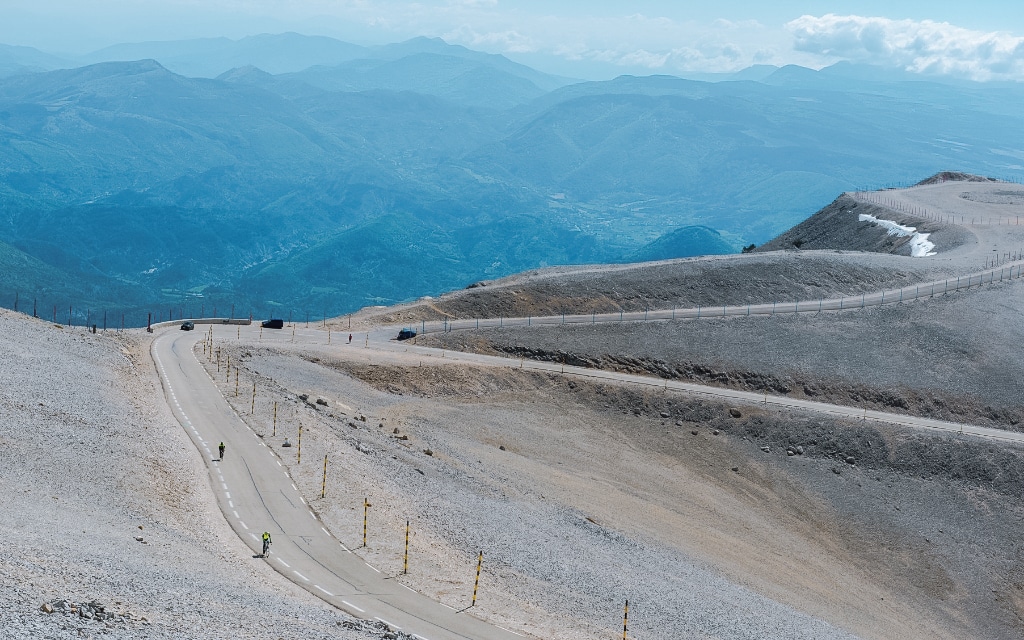
The peak was designated a UNESCO Biosphere Reserve in 1990. The local landscape is completely different. Bare limestone without trees and vegetation with a magnificent view of Provence. Don’t forget to pack a proper windbreaker. Ventoux means windy in French. This is evidenced by the measurements, when the wind reached speeds of up to 320 km/h.
12. Camarque Nature Park
Camarque is a nature park around the Rhone Delta. With an area of 900 km2, it is the largest river delta in Europe. It’s an area full of swamps, fields, salt flats, lakes and the white cabins of the park rangers – cowboys.
Camarque is quite different in character from the rest of France. Camarque Park is home to semi-wild horses, semi-wild bulls and flamingos.
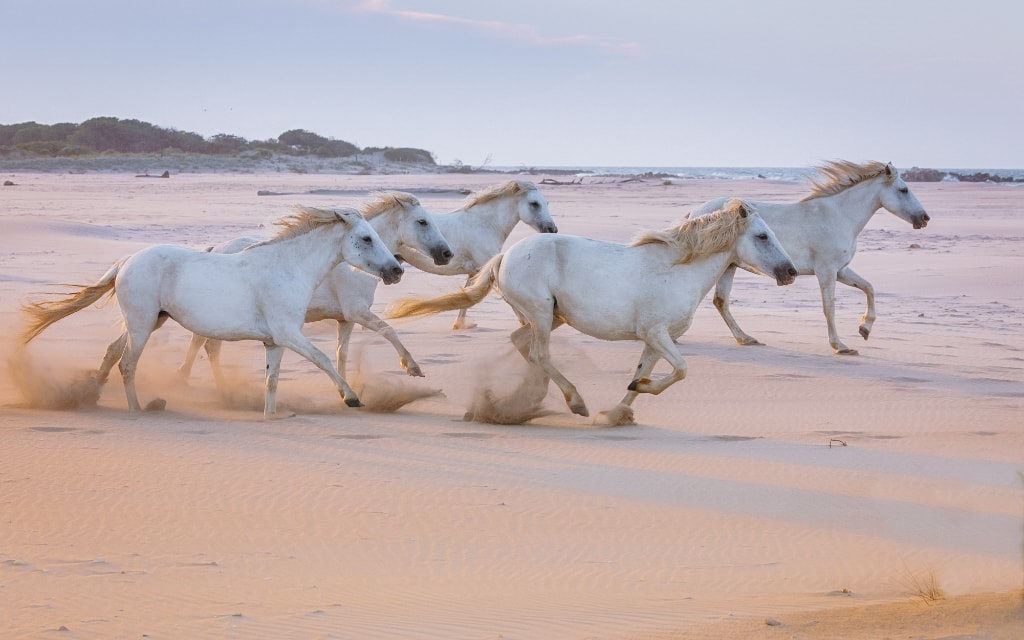
You can just walk or cycle along one of the marked routes ( Mas du Pont de Rousty is an ideal starting point) or watch a bullfight.
13. Saintes-Maries-de-la-Mer
Saintes-Maries-de-la-Mer is a small town in the Camarque Natural Park. In translation, the name can be translated as St. Mary by the Sea. It is based on the legend that three biblical Marys from the Holy Land arrived in the area by boat. Their remains are preserved in the Romanesque church of the Église des Santes-Maries, which offers a great view of the Camarque area.
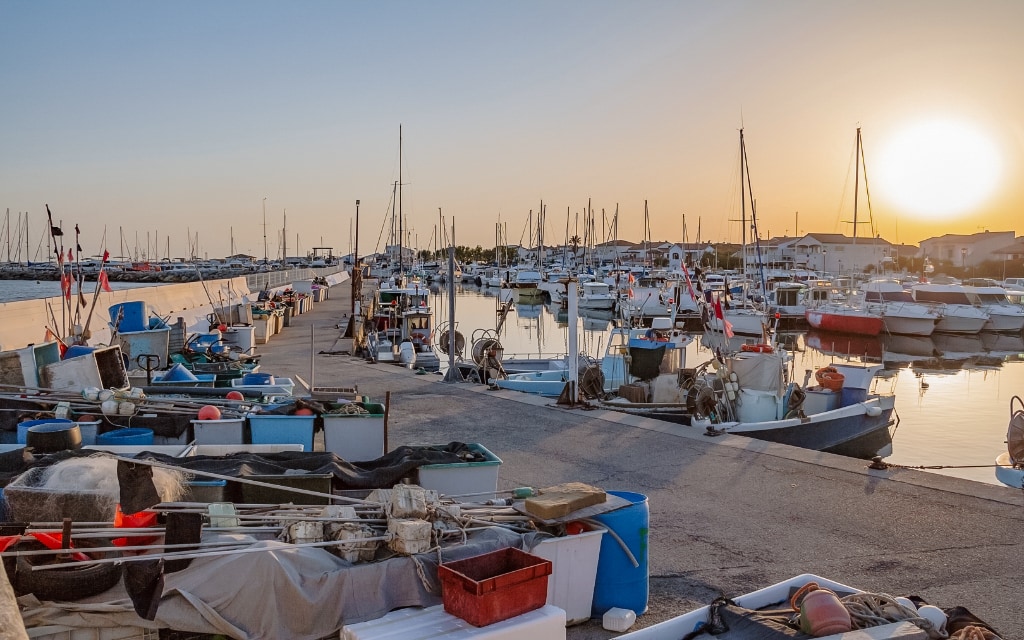
A short walk away is the Musée Baroncelli, where you can learn more about the history of the town. Among other things, they talk about the traditional, spectacular Romani pilgrimages that take place here every May. Saintes-Maries-de-la-Mer is the starting point for exploring Camarques Park. Many hiking trails start here, where you can admire flamingos or semi-wild horses.
14. Calanques National Park
The Calanques National Park is made up of limestone cliffs, fjords and rocky spurs dotted with pine trees that fall into the Mediterranean Sea. It stretches for 20 km along the coast between Marseille and La Ciotat. The area is best accessed from the town of Cassis. Here you can buy tickets for a boat that sails around the coast and see the cliffs from a different angle.
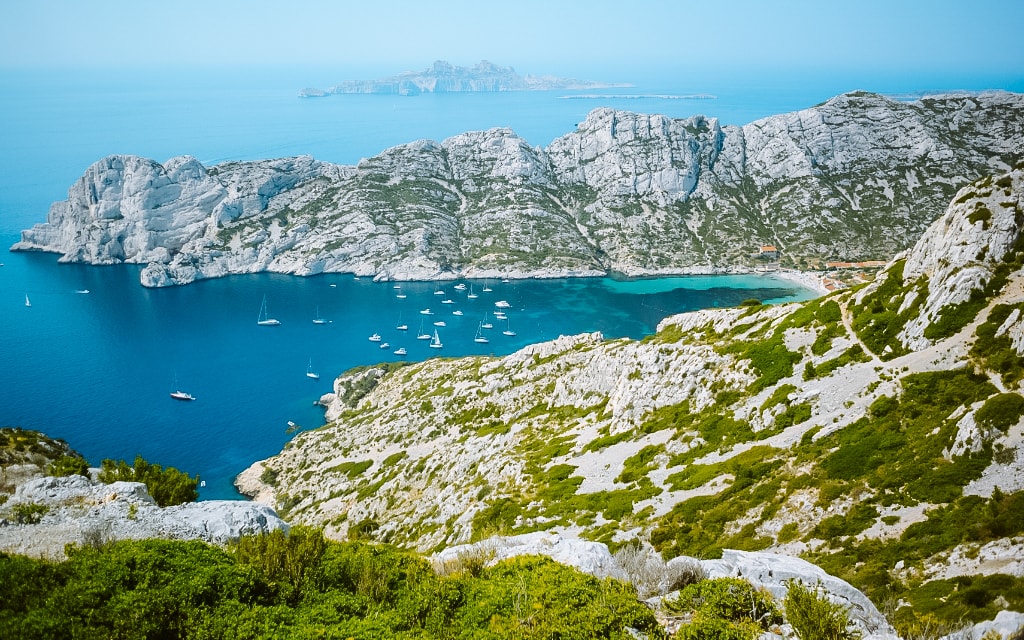
There are hiking trails around the bay and you will gradually pass by several calanques, enjoying beautiful views and incredible nature. Port Miou and Port Pin bays are the easiest to access – head west from Cassis.
There are small beaches at En Vau and Port Pin, so don’t forget your swimsuit so you can swim between the cliffs.
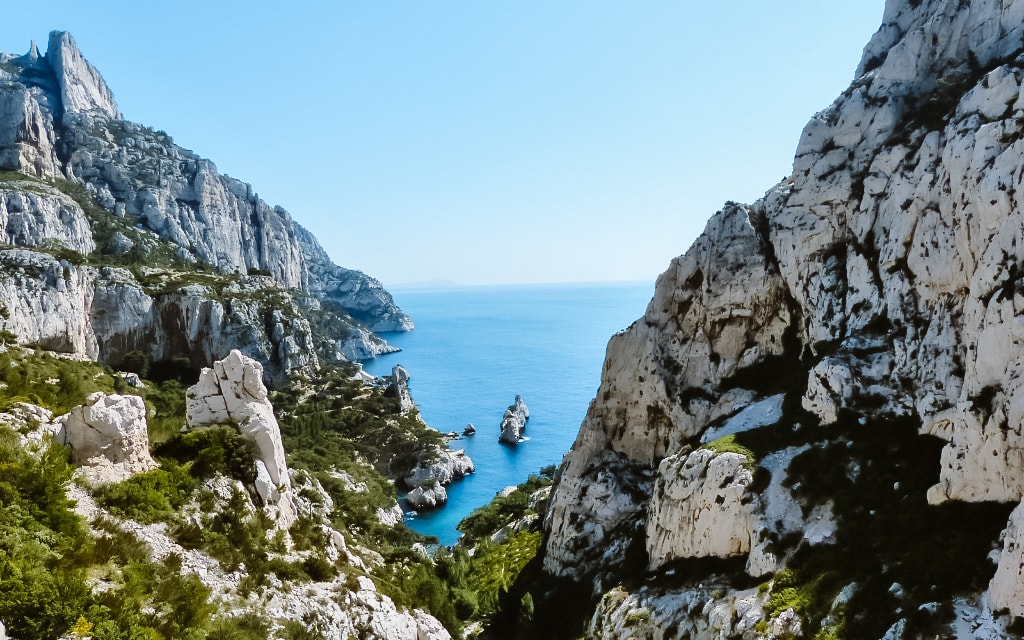
15. Marseille
Marseille is located on the Mediterranean coast. It extends around the bay and is backed by several lower peaks in the surrounding area. It is the second largest city in France and for centuries an important port (among other things, it is the main port with Africa).
Marseille is a vibrant city where history, culture and diversity are all combined. Set aside about a day to explore it, or 2 days for a leisurely stroll.
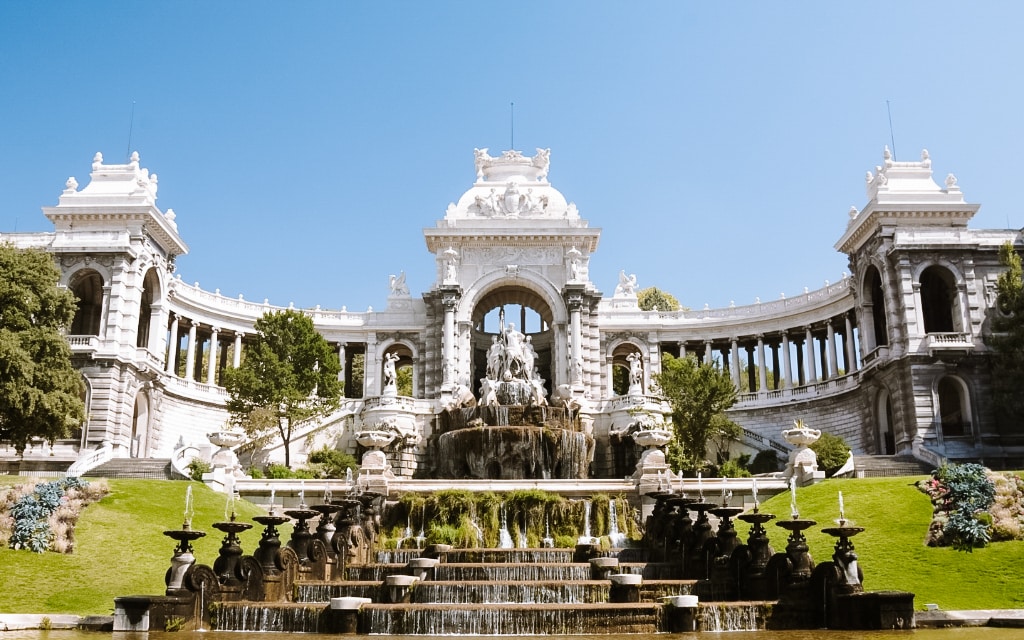
You can start with breakfast in the Old Harbour with its fish market and from there continue around the harbour and discover places like:
- Marseille Cathedral (Cathédrale de la Major)
- Basilica of Notre Dame de la Garde with spectacular views
- Hospice Vieille Charité with the Museum of Mediterranean Architecture
- Saint-Victor Basilica
- Greek remains in the Jardin des Vestiges
- Church of Saint-Laurent
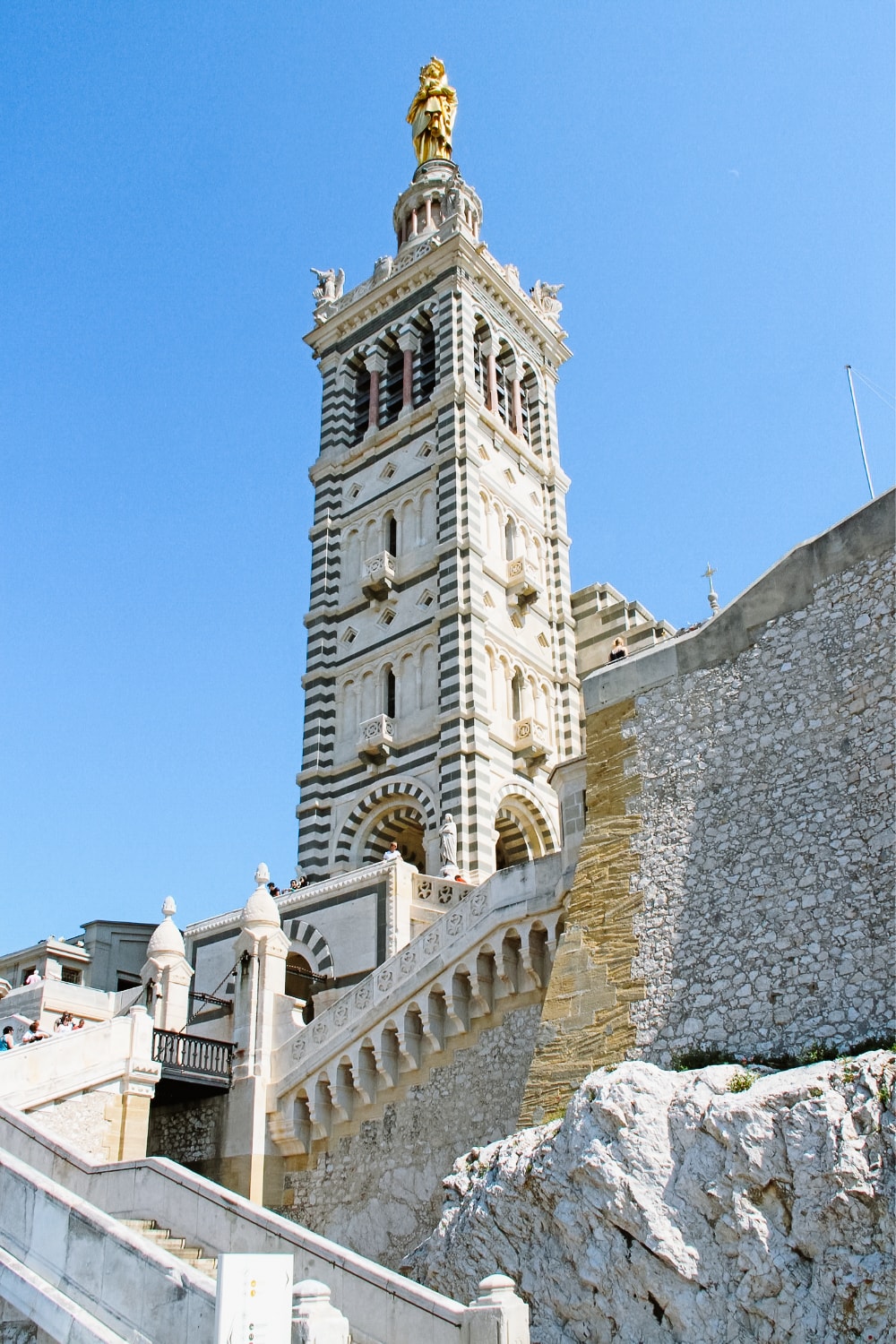
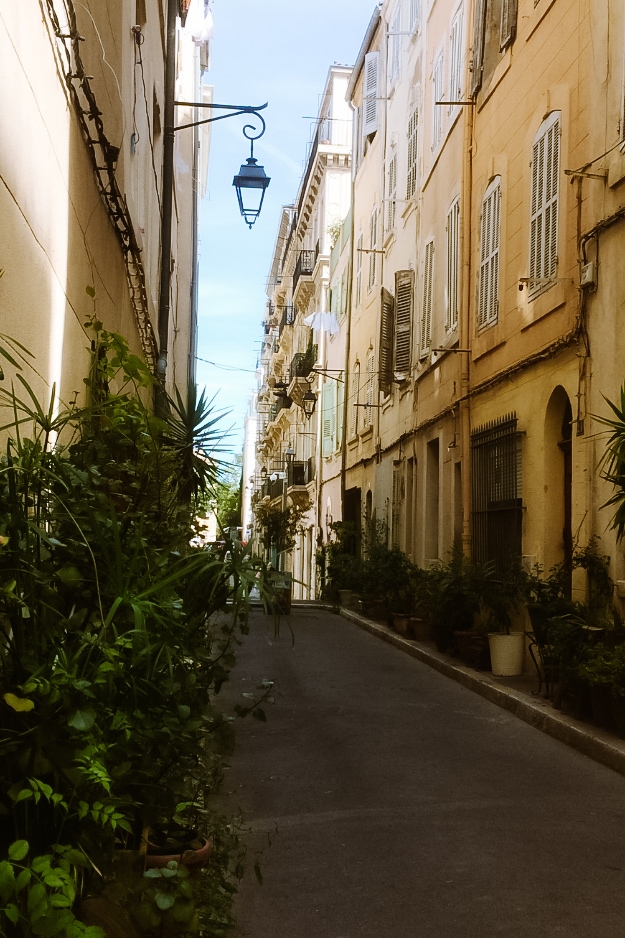
For a great meal, head to Le Panier, the oldest district – the Douceur Piquante restaurant has a great intimate atmosphere. Or try the snacks and delicious cocktails at CopperBay by the Old Harbour.
Marseille is also a strategic base for excursions in the surrounding area – for example, to the limestone cliffs of the Calanques National Park. Take a sailing trip, for the best views of the beautiful countryside.
Where to stay in Marseille
- Toyoko INN Marseille Saint Charles Located near the bus and train station. The metro station is just a few minutes away. Rooms are 2-bedded with private bathroom and a small fridge.
- Holiday Inn Express Marseille Saint Charles offers modern and clean rooms with private bathrooms. The train station and the old harbour are easily accessible on foot.
- The People – Marseille is a newly furnished and comfortable hostel with full facilities and an excellent location
Hotels in Marseille 😴
16. Aix-en-Provence
25 km north of Marseille is the most fashionable city in France – Aix-en-Provence. It is the former capital of the Celts, then an important Roman city and also the capital of Provence.
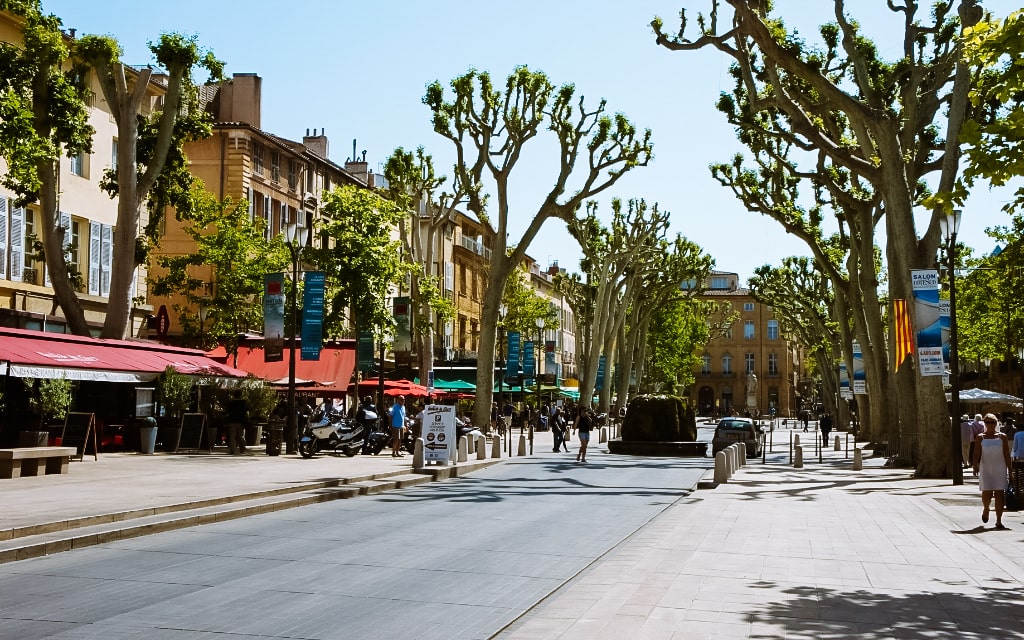
Aix-en-Provence is a lively city full of museums, which attracts with its atmosphere, pastel houses and baroque architecture. You’ll find sunny squares full of cafes, wide avenues lined with plane trees, boutiques and historic houses.
You can start your city walk at the main thoroughfare in the city centre – Cours Mirabeau (like a smaller Champs Elysées). North of here, the old town clusters around the town hall and cathedral, and south of the Cours Mirabeau, the Place des Quatre Dauphins with its 17th-century fountains. Among the sights, don’t miss the aforementioned Town Hall with its Italian-style facade and clock tower, Saint Sauveur Cathedral and Baptistry Cathedral.
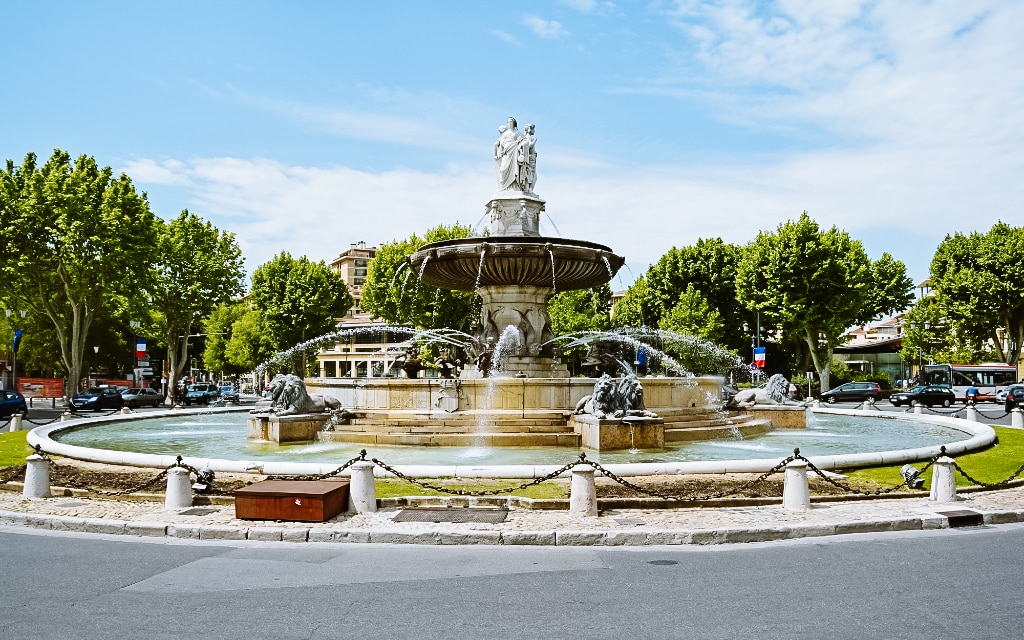
If you are looking for a restaurant where you can enjoy French food, try Le bouche à Oreille. It’s a bit hidden, but as it happens, these “hidden” restaurants are the best places to cook. Would you rather try something else? How about Argentinian cuisine at the Empanadas Club? A small, friendly restaurant that makes a great empanada.
17. Gorges du Verdon
The Verdon Canyon (Gorges du Verdon) is a gorge around the Verdon River that has been forming for 2 million years. The canyon with its turquoise river and high limestone cliffs is up to 700 m deep and between 100-1500 m wide. The most impressive part is between Castellane to the east, Lac de Sainte-Croix to the south and Moustiers-Sainte-Marie to the west.
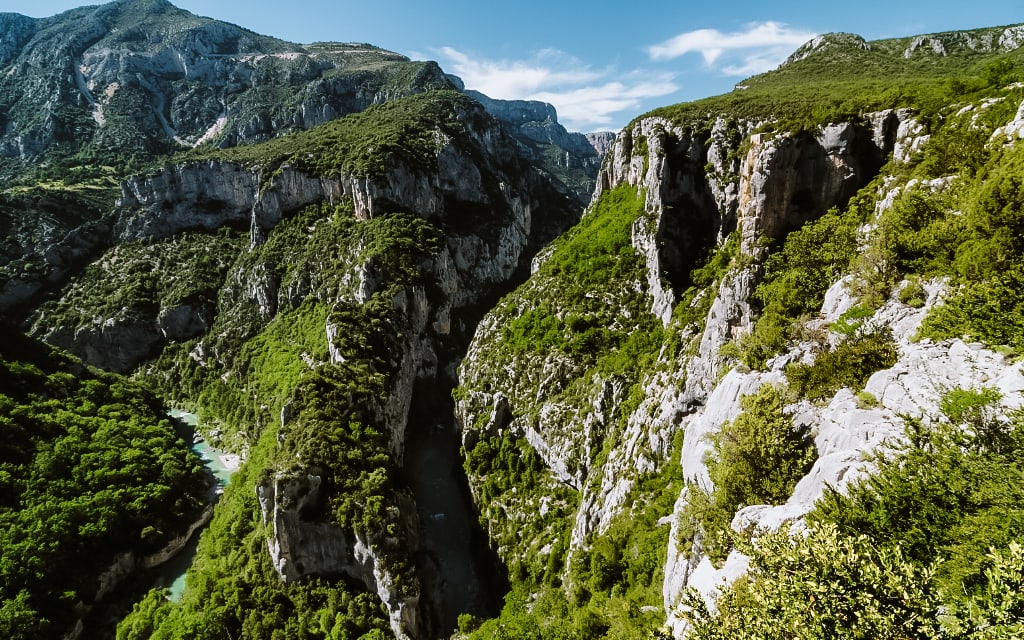
The main circuit runs between Aiguines and Moustiers-Sainte-Marie to the west and Trigance and Castellane to the east. The route is called Sentier Martel and is 15 km long between Point Sublime and Chalet de la Maline. You’ll be treated to spectacular views. The Styx du Verdon route passes through the lower part of the Verdon Canyon.
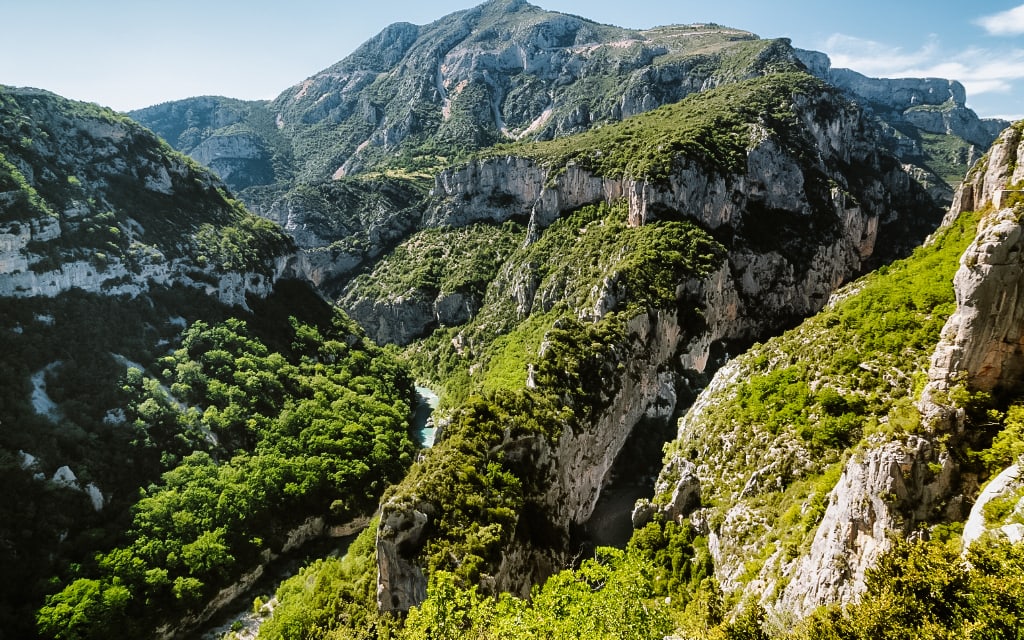
If you don’t feel like walking, you can drive around the top of the Gorges du Verdon. There are several viewpoints along the way. Or rent a pedal boat or raft and set sail on the river. You can take a bath here, too. Beaches can be found at Lac de Sainte-Croix. Near the canyon, the village of Entrevaux in the cliffs is worth a visit.
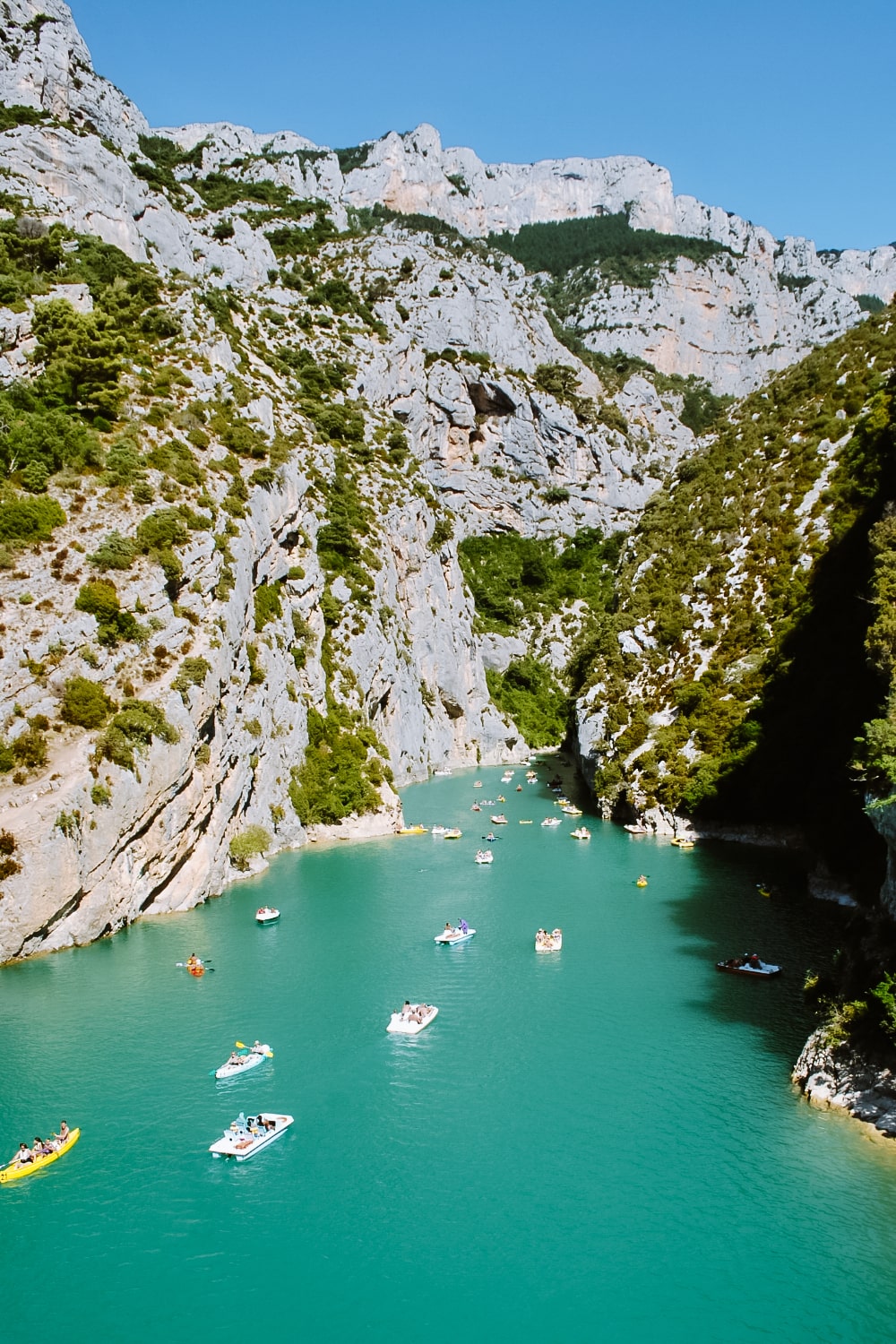
18. Fontaine-de-Vaucluse
Fontaine-de-Vaucluse is a medieval village at the source of the Sorgue River. It is surrounded by the imposing cliffs of the Vaucluse and surrounded by an emerald green river. You can hike above the village to the castle, where you will have a magnificent view.
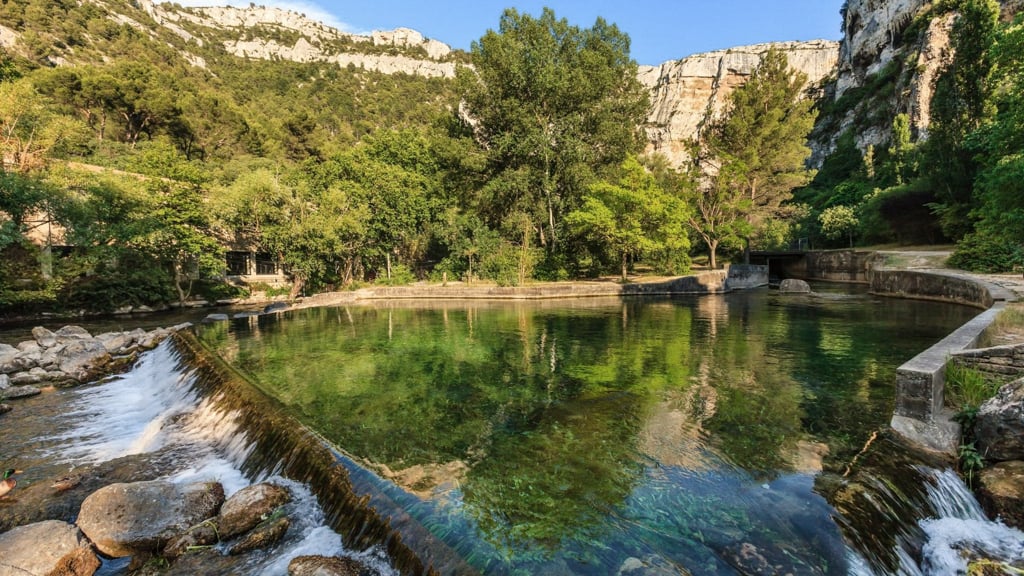
If you walk a few hundred metres into the Sorgue valley, you will reach a beautiful landscape with high cliffs and a river flowing over the rocks. The route is called Chemin de la Fontaine.
19. Les Baux-de-Provence
With 2 million visitors a year, Les Baux-de-Provence is the most visited village in France. When you arrive, you can already see the huge castle complex on the hill, from where you have a magnificent view of the village.
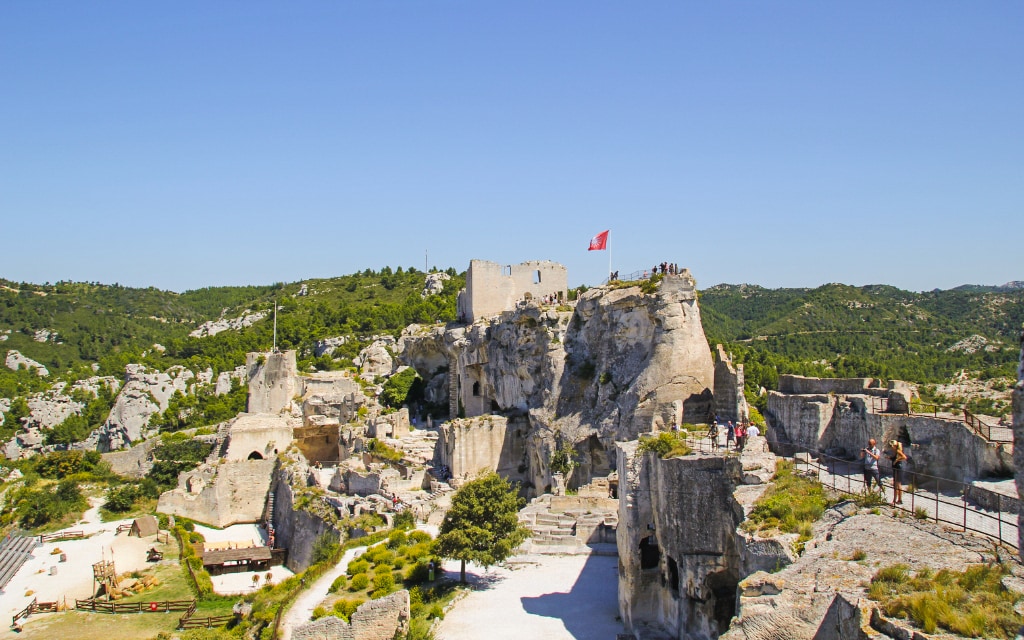
The houses are scattered in the Alpilles mountains around charming streets where you can walk for hours. While wandering around, you’ll come across other attractions such as the Roman-style Church of St Vincent and the large Post Tenebras Lux window.
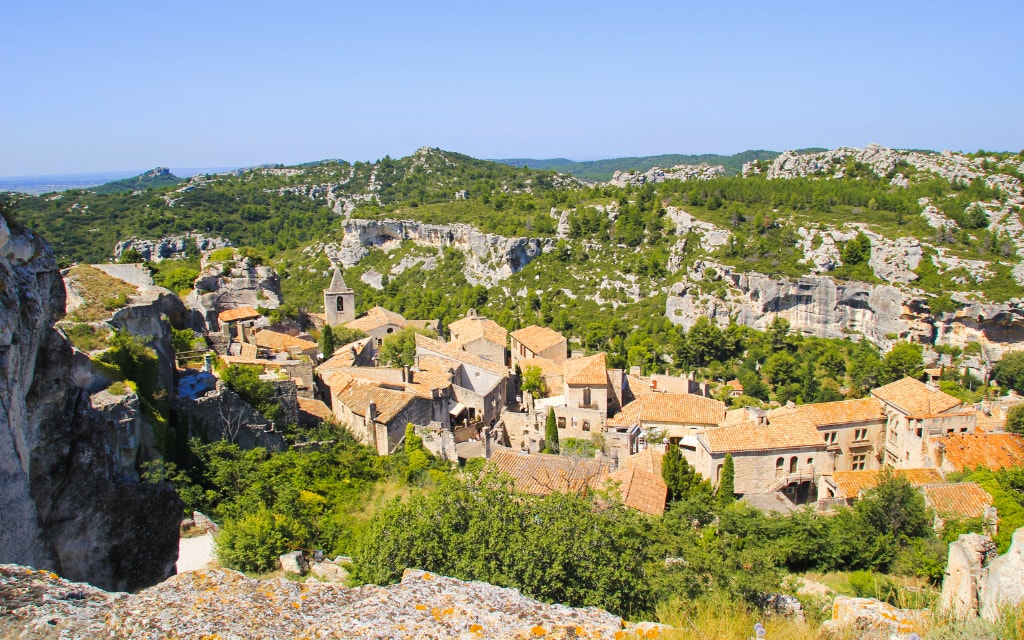
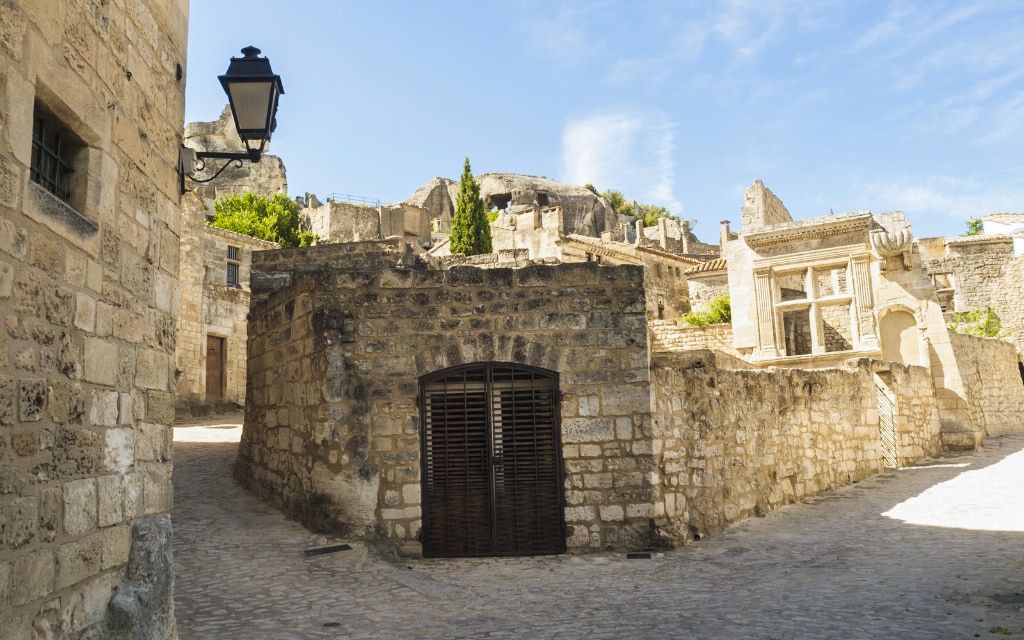
20. Quarry Grands Fonds
A few hundred metres beyond the village of Les Baux-de-Provence, towards Maillone, is the Grands Fonds quarry. This is an old industrial area which is currently used for the Carrières de Lumières sound and light show.
It’s an amazing spectacle that includes works by leading artists such as Michelangelo, Van Gogh and others (programme subject to change). Accompanied by music, you will enjoy a fantastic show full of art and lights. Book your tickets by clicking here.
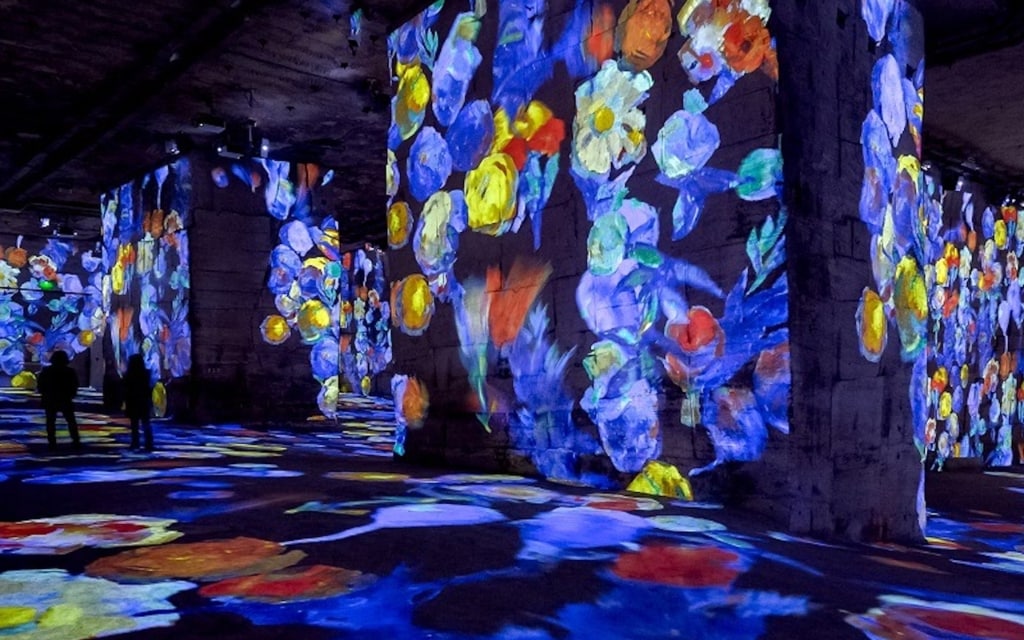
21. Saint-Rémy-de-Provence
Saint Rémy de Provence is a small town, 20 km south of Avignon, situated under the slopes of the Alpilles. It was built on the site of an old Roman city, from which the triumphal arch of Glanum and a mausoleum with scenes of the life of the ancient Romans have been preserved.
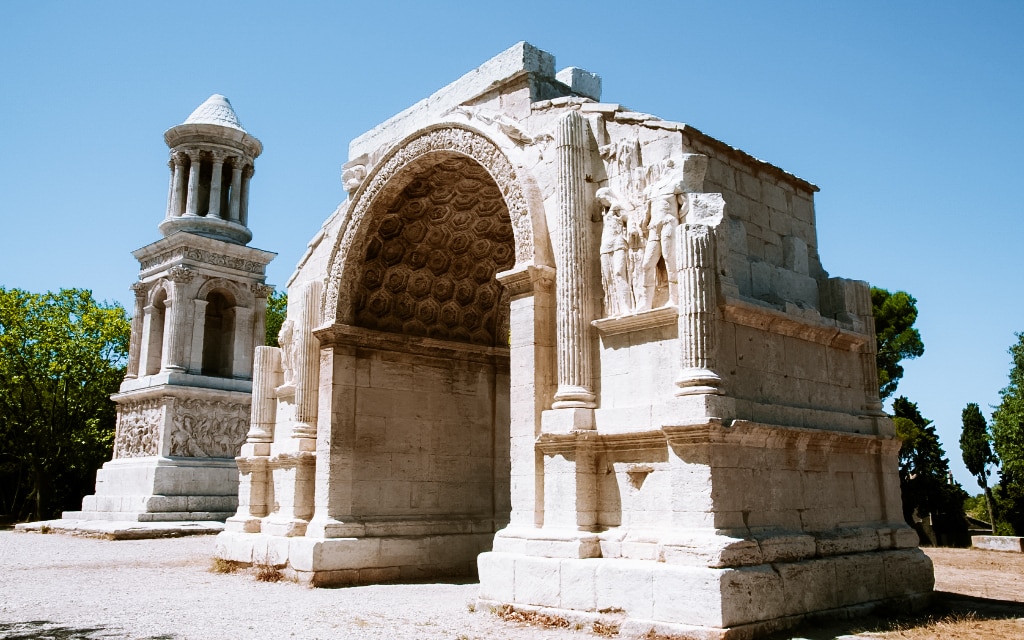
The town was the birthplace of the famous prophet Nostradamus, whose birthplace can still be seen today. Van Gogh also stayed in the sanatorium for a year and is said to have painted up to 150 of his paintings here.
22. Briancon
Briancon is the largest town in the Hautes-Alpes department. It has a beautiful historic core with narrow streets lined with houses with colourful shutters. The biggest landmark of the city is the huge fortress designed by the famous military engineer Vauban, which is a UNESCO World Heritage Site.
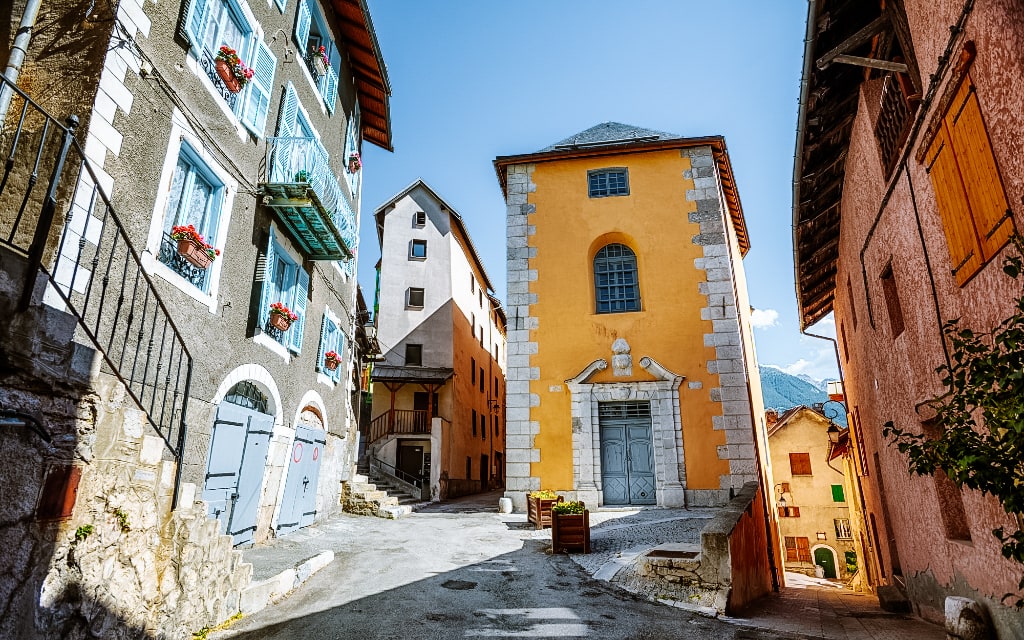
23. Queyras Nature Park
The Queyras Nature Park is an area of spectacular mountain scenery located on the border with Italy. In addition to the beautiful nature, there are several interesting things to see here. For example, the Col d’Izoard mountain pass, where there is a dry, almost lunar rocky landscape. The saddle is also a famous mountain climb of the Tour de France.
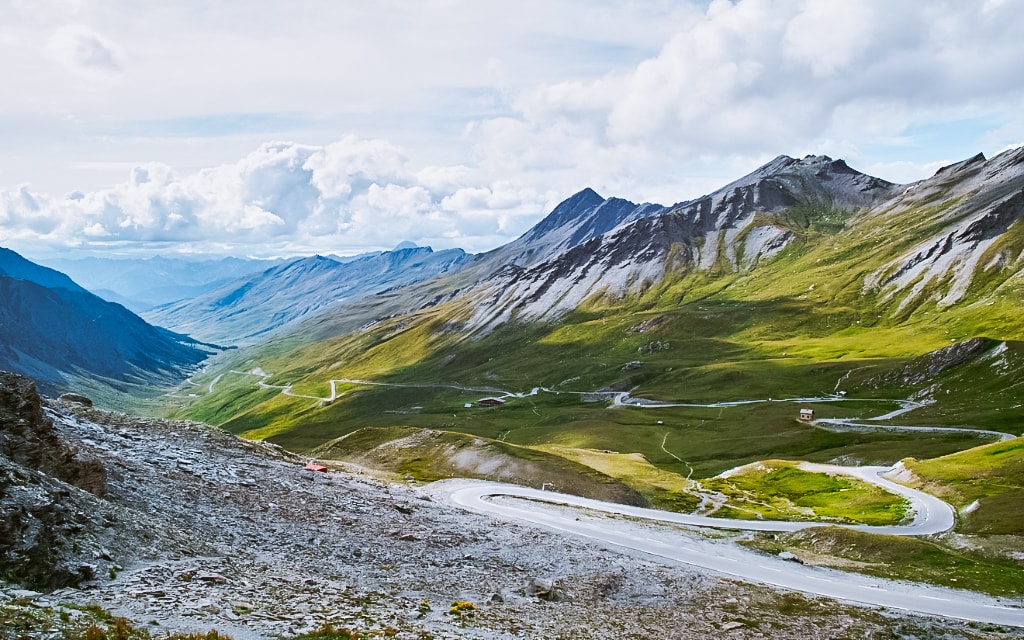
The village of Saint-Veran is also worth a visit. Located at an altitude of 2000 m, it is one of the highest villages in France. It’s small, but absolutely charming.
Don’t miss the medieval Queyras Castle on a rocky outcrop near Chateau-Ville-Vieille or the turquoise-blue Lac de Serre-Ponçon dam.
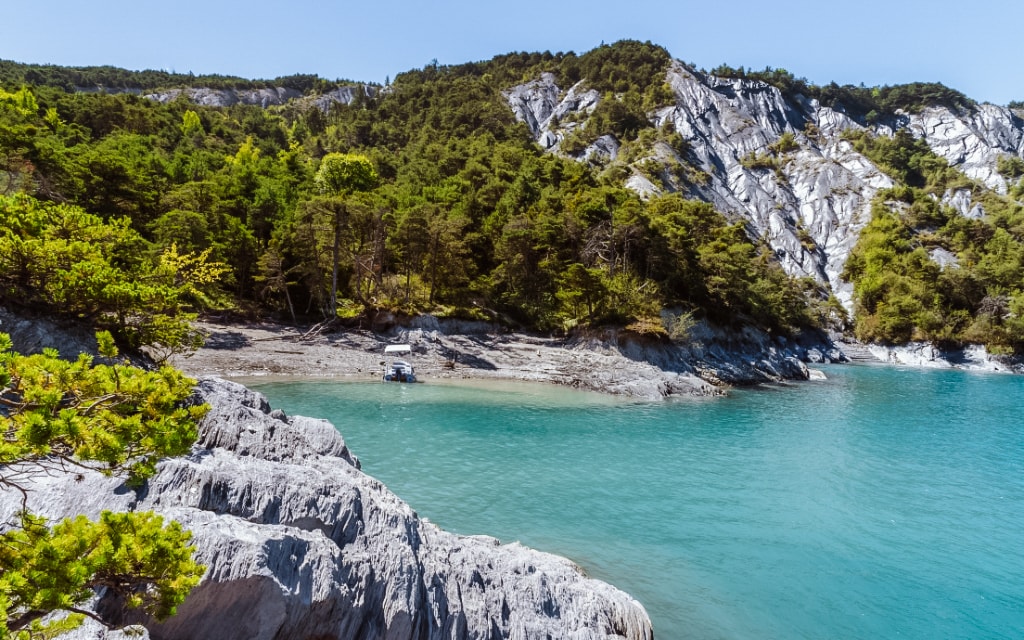
24. Ecrins National Park
The Ecrins National Park is another area where hiking enthusiasts will enjoy themselves. Mountainous area, lush meadows and more than 100 mountain peaks at an altitude of over 3000 m. The highest peak is the Barre des Ecrins with a height of 4102 m. The area is great for outdoor activities and climbing.
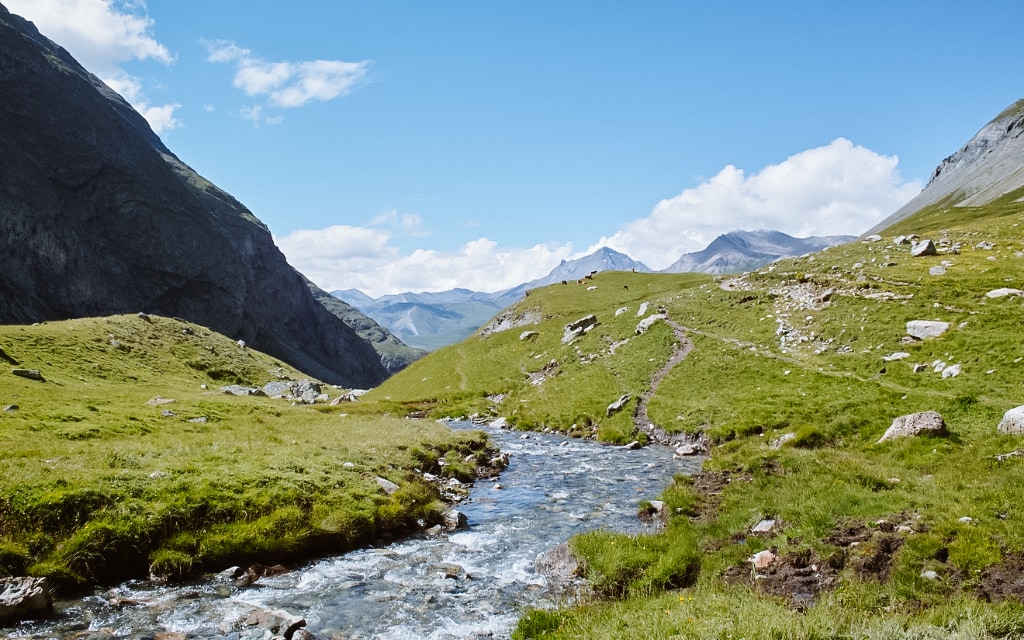
There are more than 700 km of marked trails of varying difficulty. One of the most beautiful is the route through the Fournel valley between the village of Ailefroide and the mountain hut of Pré du Madame Carle. If you’d rather drive and still enjoy the spectacular views, head from Le Bourg d’Oisans towards La Berarde.
Another beautiful area of the national park is the Valgaudemar valley between Grenoble and Gap. The entrance is from St. Firmin or St. Jacques. You will pass small villages with stone houses and small churches in contrast to the beautiful mountain nature. The valley is also accessible by car.
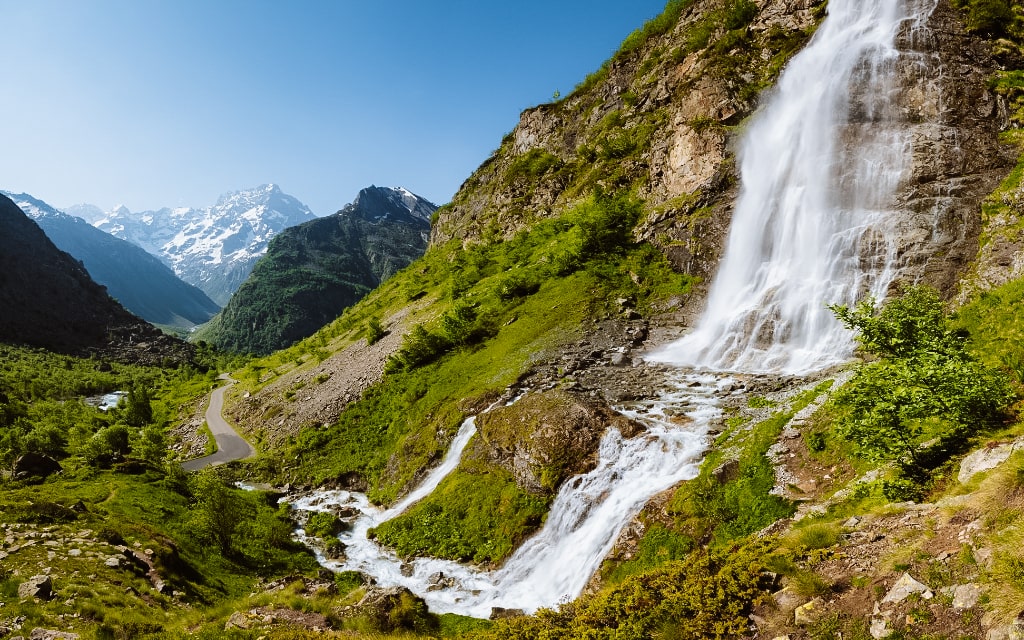
25. Hyères Islands (Îles d’Hyères) – Golden Isles
The Hyères Islands are a group of islands located near the town of Hyères on the French Riviera. They are known for their beautiful, unspoilt landscapes, which is why part of them has been designated as Port Cros National Park. The islands include Pourquerolles, Le Levant and Port-Cros.
The islands have beautiful beaches and nature, rugged coastlines and crystal clear water. According to many, it is one of the most beautiful places in France.
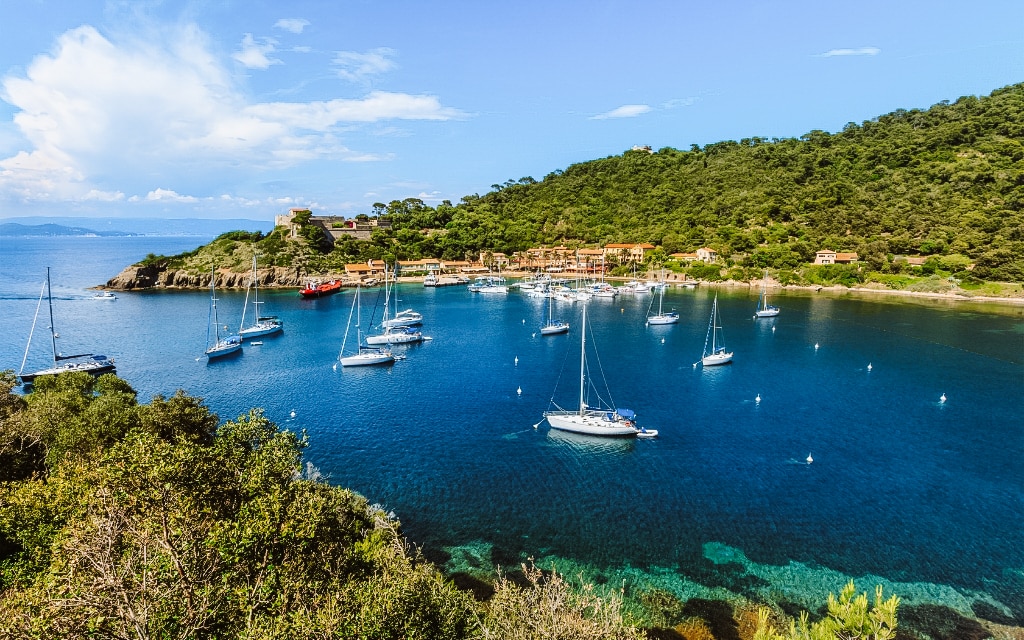
The island of Pourquerolles with its ancient fortress is the most easily accessible. The area of Port-Cros Island is a national park and you must follow the marked trails. Part of the island of Le Levant is used as a military area and the rest is full of hiking trails, so you can explore the landscape. The islands are easily accessible by boat from Toulon, Hyères, the Giens peninsula and other places.
Where to stay in Provence?
In high season it is better to look for accommodation several weeks in advance. Prices can double at the last minute. In addition, many hotels and guesthouses offer free cancellation even a few days before arrival.
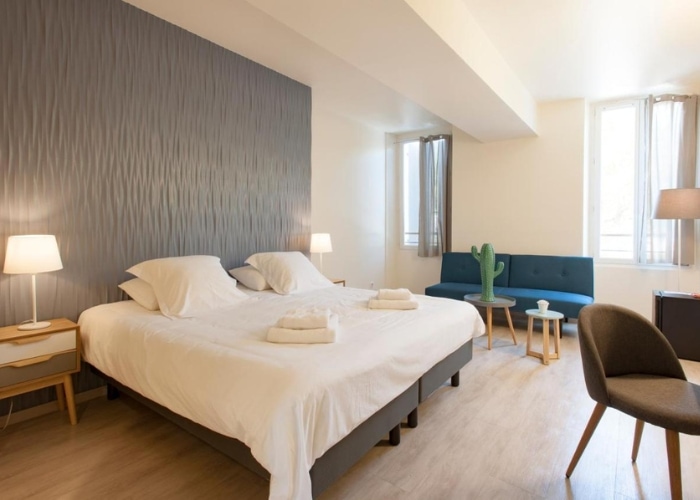
Collobrières – Hotel Restaurant des Maures
Newly furnished, cosy hotel in a quiet village by a stream. Excellent cuisine and great value for money.
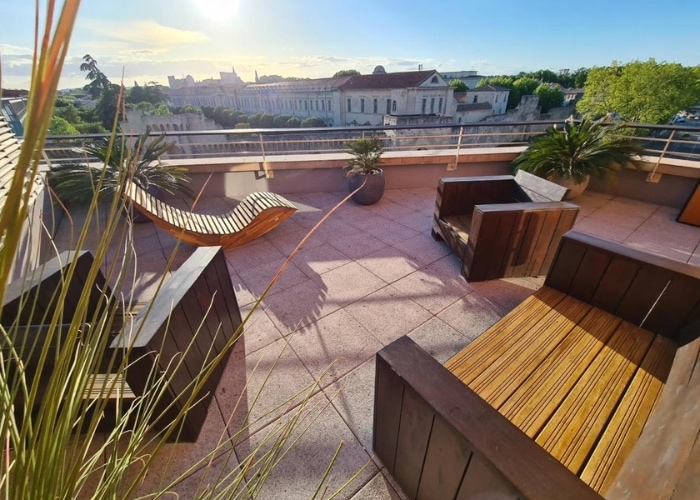
Avignon – ApartHotel Sainte-Marthe
Well-equipped accommodation in apartments with kitchenette, free parking and excellent location to the old town in Avignon.
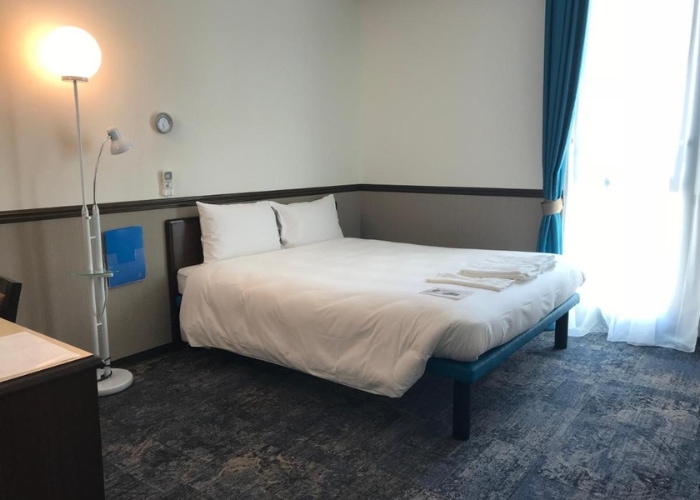
Marseille – Hotel Toyoko INN Marseille
Modern, comfortable hotel a short walk from the train station, ideal for exploring Marseille and trips to the Provence area.
Provence itinerary
The Provence region is so vast that you will need 10-14 days to explore it in detail. If you want to visit that typical Provence in the south-west of the region, which we all think of in terms of lavender fields, medieval villages in the cliffs and coastlines with wild cliffs and crystal clear water, set aside 7-10 days.
Itinerary for the south-west of Provence:
- Avignon and Pont du Gard – 1 day
- Les Baux-de-Provence village, Arles town and Camarque park – 2-3 days depending on the number of places visited
- Marseille and the Calanques – 2 days
- City of Aix-en-Provence – 1 day
- Sénanque Monastery, Oppède le Vieux, Gordes and other places in the Luberon area – 1-3 days depending on the number of places visited and whether lavender is in bloom
- Verdon Canyon and lavender fields Plateau de Valensole – 1 day
With this itinerary you will discover the best of Provence.
How to get to Provence, France
By car
If you drive, there are toll charges in France (depending on the route you choose). You can calculate the toll on this link.
In high season, many French and non-French tourists head to the French Riviera in the south of the country – be prepared for heavy traffic. This is also true around the most popular places in Provence. I recommend going to places like this early in the morning or later in the afternoon to avoid the biggest crowds and to park well.
The maximum speed limit on French motorways is 130 km/h and 110 km/h in wet weather, 80 km/h on roads and 50 km/h in the countryside.
By air to Provence
The main airport for Provence is the airport near Marseille, which lies to the north of the city. Buses run regularly from the airport to both Marseille and Aix-en-Provence. The journey to both cities takes half an hour. Here you can find information on bus connections from the airport:
- Bus connections and other information from the airport to Aix-en-Provence
- Bus connections and other information from the airport to Marseille
Trains and buses make getting around Provence easy. Buses are cheaper, but the journey takes longer. Another option is to rent a car locally. I recommend choosing smaller and narrower cars, because some of the streets in Provençal villages are very narrow.
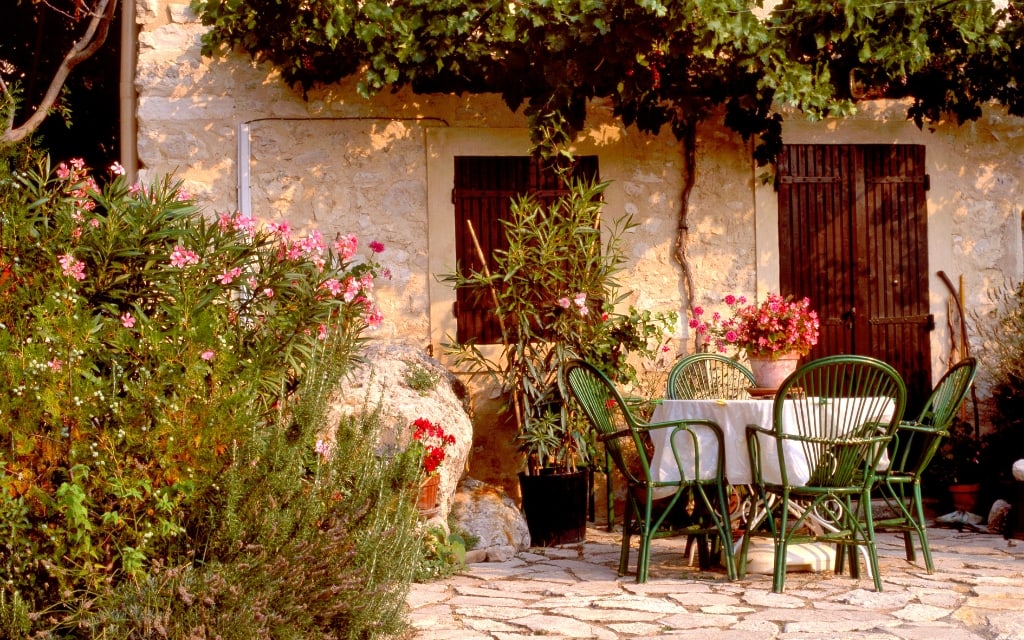
How to get around Provence
Trains and buses
TER (Transport Express Régional) regional trains connect many towns in Provence. They are reliable and often offer views of the countryside. You can also use the TGV (Train à Grande Vitesse) to move quickly between some cities – for example, between Avignon and Marseille.
The trains are complemented by regional buses, which are more cost-effective than trains and connect cities that are not connected by train.
Check the SNCF website for train connections .
Here you can find a map of train and bus connections in Provence.
Car rental on site
Car rental is another option for getting around Provence. And a very popular one, because the car will take you to every corner of Provence. You don’t have to limit yourself to train or bus services, which are sometimes very sporadic (especially in rural areas).
You can rent a car right at Marseille Airport or at many other locations nearby. Book your car well in advance to secure the lowest price – Here you’ll find the widest range, including reviews.
I recommend choosing smaller car models as some regional or local roads can be really narrow with hairpin bends. In addition, car parks can be busy early and with a smaller car you have a better chance of fitting into the car park.
Food in Provence
Markets
The local markets are one of the best things about Provence. In some towns, there are even markets every day. At the market you can buy everything from fruit, vegetables, to lavender products, tablecloths, clothes, cheese, jam, pottery and other local goods.
Popular markets in Provence:
- Avignon every day in the indoor market Les Halles d’Avignon
- Saint Rémy de Provence on Wednesday
- Aix en Provence on Thursday and Friday
- Lourmarin on Friday
- Isle sur la Sorgue on Thursday and Sunday, which is also the largest flea market in France after Paris
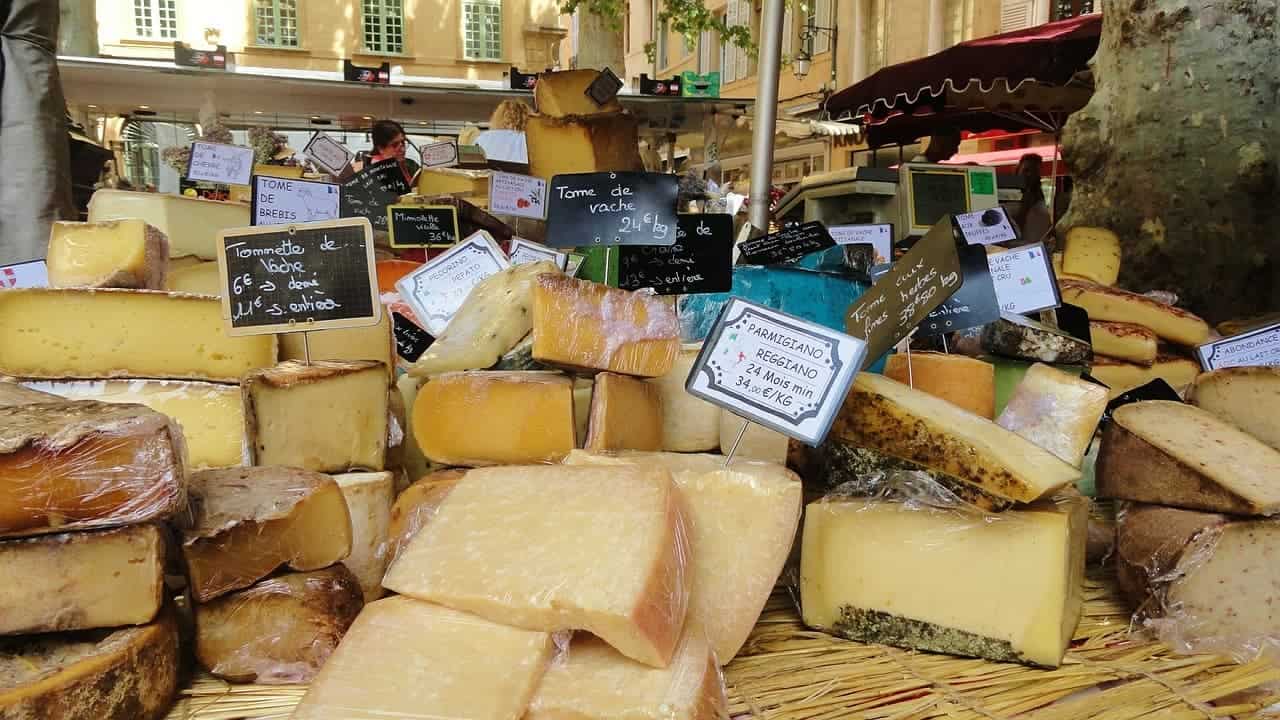
What to taste in Provence: traditional food
Provençal cuisine is characterised by dishes with olive oil, tomatoes, garlic and herbs. The food is simple and family-style.
The dishes in the restaurants respect the seasons – game and wild mushrooms in the autumn, truffles or daubes (beef or lamb slow-cooked in a wine and vegetable sauce) in the winter, asparagus, beans, local strawberries and melons in April, and cherries, peaches, nectarines, apricots in the summer, and apples, pears and grapes at the end of the summer season.
Try the salad nicoise (tomatoes, olives, eggs, tuna, lettuce), bouillabaisse (a soup of cooked vegetables, sea fish, garlic, saffron and Provençal herbs) or ratatouille (a casserole of tomatoes, courgettes, aubergines, peppers, onions, garlic and herbs with bread)
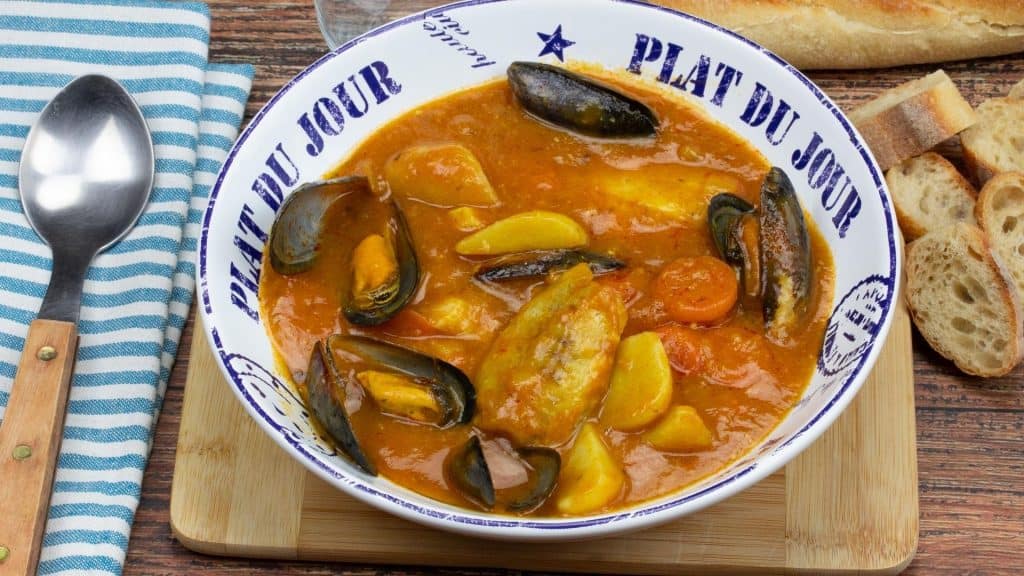
Restaurants and shops in Provence
As for restaurants, choose those in quiet, tucked-away streets. Authentic Provençal cuisine awaits you here. Plus, the locals come here too, the prices are lower and it has the right atmosphere. Specific restaurant tips can be found a little higher up in the section on things to do in Provence.
Shops are usually open Monday to Saturday from 9:00-19:00 (in large hypermarkets on the outskirts of larger cities until 22:00). On Sundays, bakeries or grocery stores are usually open in towns in the morning.
The water throughout Provence is drinkable. In restaurants, it is available for free under the name carafe d’eau (carafe of water). You can leave your tips on a coin plate or on the table. Usually 5-10% of the spending is left.
When to visit Provence?
Spring (March to May): In spring, Provence has pleasant temperatures and fewer tourists than in summer. The region begins to come alive with colour, especially with poppies and cherry blossoms during late spring.
Summer (June to August): Summer is the main tourist season, so popular places can be crowded and accommodation prices are higher. The weather tends to be very hot, especially in July and August. Lavender also blooms at this time, peaking in July.
Autumn (September to November): Autumn is the time of the grape harvest, so it’s a great time for wine lovers. Temperatures are cooler but pleasant. The number of tourists is also decreasing, so popular attractions are less crowded. The olive harvest also begins in late autumn and many gastronomic festivals are held.
Winter (December to February): Winter has the fewest tourists, so it’s a quieter time to explore the cities. In coastal areas, winters are milder, while inland and mountainous areas can be colder and sometimes snow falls.
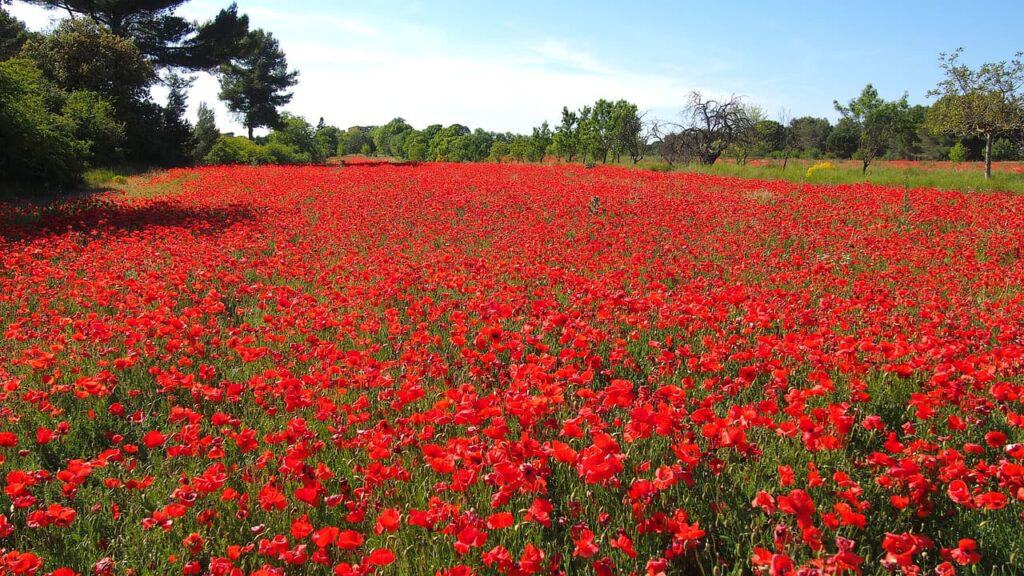
More information about France
PARIS: Get inspired by the things to do in Paris or create an itinerary for 3 days in Paris. Do you have more time? Here is a 5-day Paris itinerary.
TUSCANY: Tuscany is another popular region in Europe. It is located in Italy and will absolutely enchant you with its medieval towns, rolling hills and endless views. Here is a list of the most beautiful places in Tuscany or create your own itinerary for Tuscany.
Read even more travel inspiration in our destination guide.
